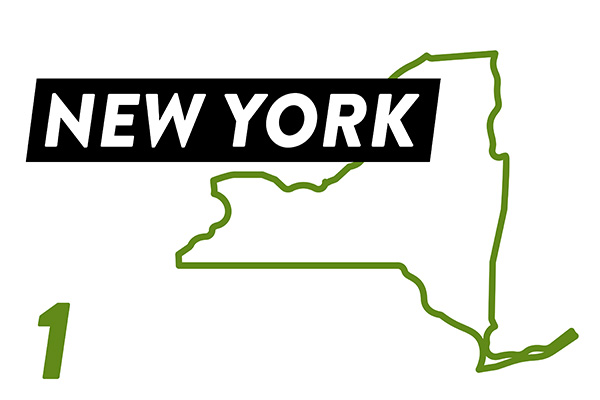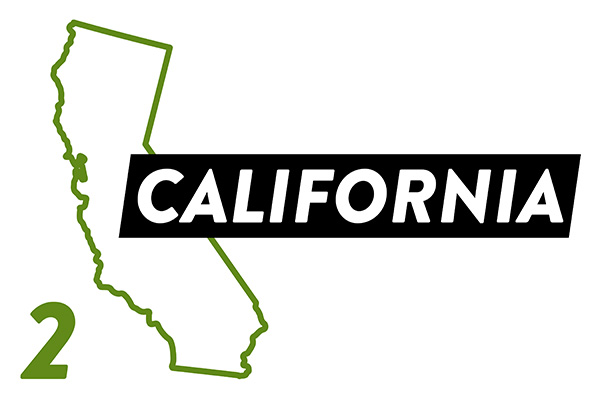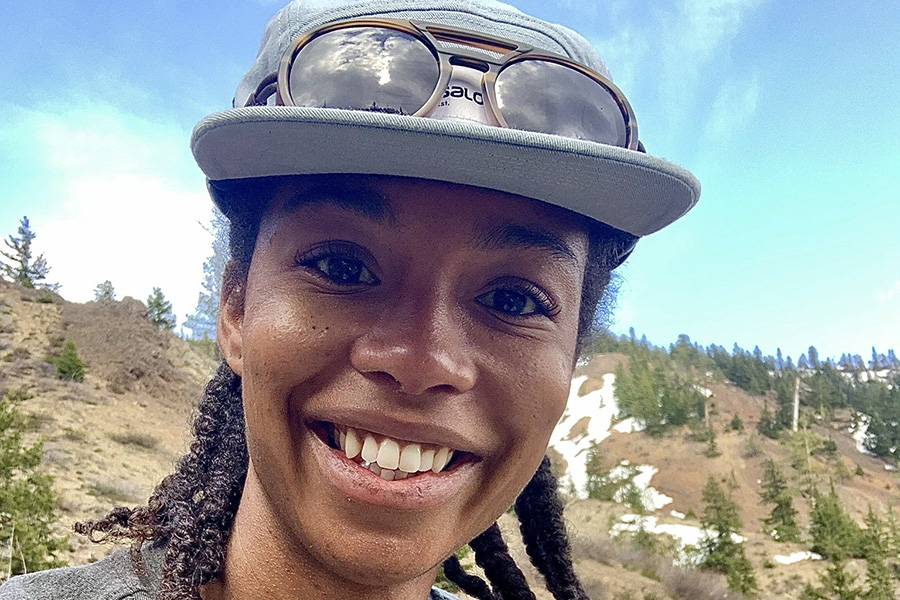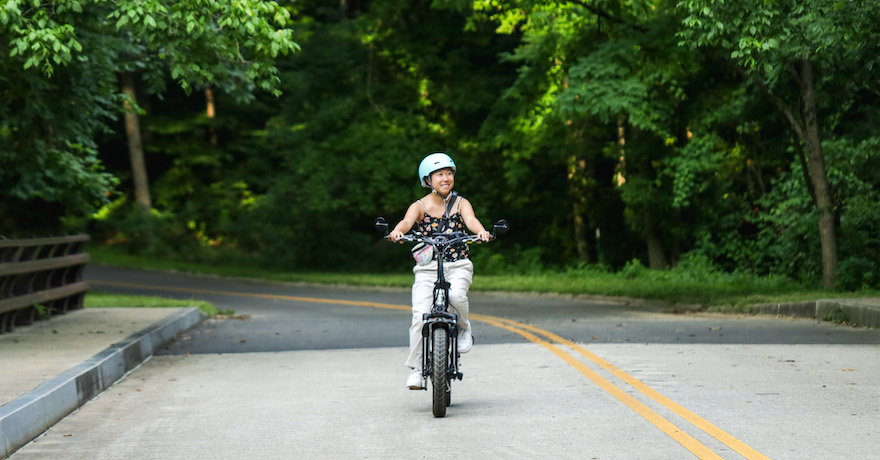Impact Report FY 2022
Description Text Here…
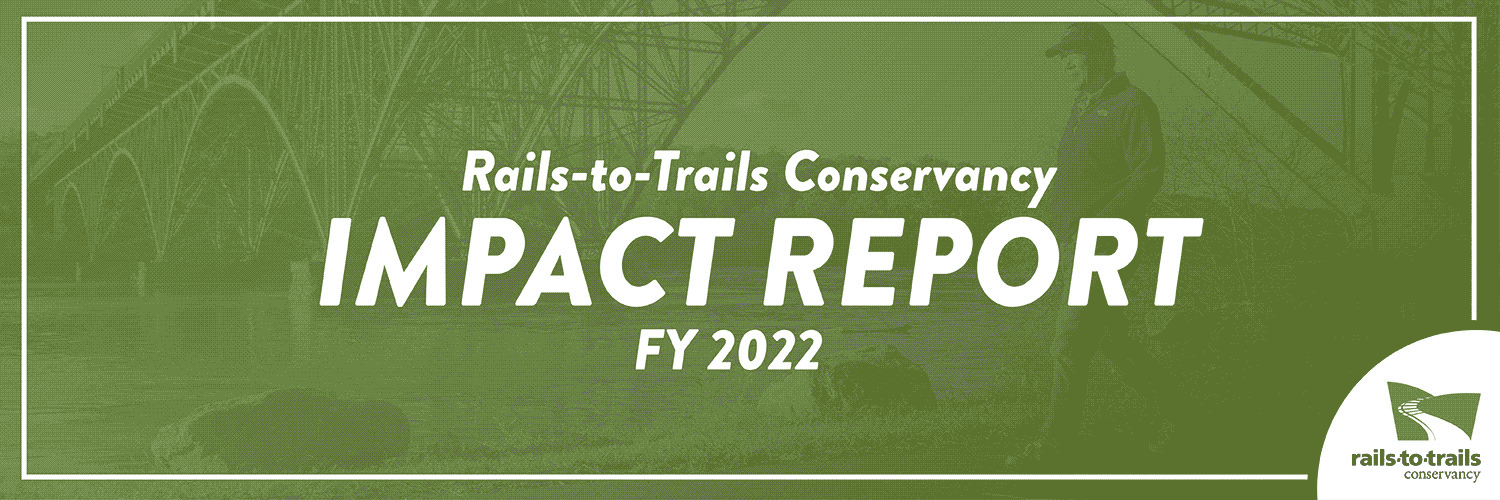
Rails-to-Trails Conservancy’s Fiscal Year 2022 (Oct. 1, 2021–Sept. 30, 2022) Impact Report chronicles a year of momentum and victory for the trails movement. Explore the ways that, together, we are making a difference.
IMPACT REPORT FY 2022 SECTIONS
President’s Message • Our Vision • TrailNation • TrailLink • Great American Rail-Trail • Trail Advocacy • Trail Building • Experiencing Trails • Finances • Team RTC

Capturing Once-in-a-Generation Opportunities for Trails, Walking and Biking
After decades of work, Rails-to-Trails Conservancy (RTC) and the trails movement stand at a critical moment for trails and trail networks to be embraced as fundamental … as critical public assets that create joyful, vibrant neighborhoods; promote equitable economic growth; and support mobility, climate resilience and closer community connections.
There is growing recognition that the biggest benefits are realized when trails, sidewalks and protected bike lanes are connected to the places where people want to go—like jobs, stores, schools and other everyday destinations. Plans are in the works nationwide to connect trails and active transportation infrastructure so that everyone can safely walk, bike and be active outside. Equity is being prioritized and centered in powerful ways. In more and more places, the people and communities who can benefit most directly from the opportunities that trail networks uniquely deliver are leading this movement of connectivity.
We’ve known for years that the need and demand for trails—and trail networks—far outpaces the supply. That phenomenon was accelerated by the pandemic when trail use skyrocketed by 50%—growth in participation like we’ve never seen before.
Today, people are continuing to seek more places close to where they live to walk, ride and connect to nature, and they’re making these activities part of their daily lives. At the same time, places across the country are pursuing interconnected trail networks in their communities. Established and well-supported plans for trails and active transportation exist in many states—and communities want to accelerate those plans. Nationwide, billions of dollars are needed to build out these incredible visions, and there is now unprecedented funding to move this work forward.
RTC celebrated with many of you when the Bipartisan Infrastructure Law (BIL) more than doubled dedicated federal funding for trails, walking and biking—exceeding $7 billion dollars. And just as important—critical policy changes and priorities in the BIL now make it possible for this funding to be used in ways that emphasize equity, while delivering resources to connect and maintain trails. With the creation of the new Active Transportation Infrastructure Investment Program, there will soon be dedicated funding to invest in connected trail and active transportation systems at scale. At the same time, competitive multimodal streams, like the federal RAISE program, are prioritizing projects that create and connect trails and other walking and biking infrastructure like never before.
The demand, funding and participation we’re experiencing is bringing unprecedented momentum to our mission to connect the nation by trail. Alongside our hundreds of partners across the country, we’re collectively moving the needle to a future where trail networks are equitable, inclusive and at the center of vibrant, thriving communities. In the past year, we’ve engaged thousands of people and hundreds of elected officials in our work to ensure that trail networks are prioritized as essential to the well-being of people, communities and the environment. Together, we’re helping to create the infrastructure, programming and culture where people value trails and make them part of their everyday lives.
Nationwide, we have everything we need to fast-track our shared vision of an interconnected national trail system that is accessible and well used by everyone in America. We have tremendous public demand. Places are putting forth big, bold ideas. And public funding is being invested at unprecedented levels.
We are living through a cultural shift in America that can be felt in small towns, big cities and everywhere in between. In all these places, access to safe spaces to walk, bike and be active outside is being valued and celebrated like never before.
This past year was game-changing for trails, walking and biking. What comes next is ours to define, together.
Sincerely,
Related: Reflecting on 2022: Capturing Once-in-a-Generation Opportunities for Trails, Walking and Biking
Ryan Chao
IMPACT REPORT FY 2022 SECTIONS
President’s Message • Our Vision • TrailNation • TrailLink • Great American Rail-Trail • Trail Advocacy • Trail Building • Experiencing Trails • Finances • Team RTC
A nation where trails connect everyone, everywhere—that’s our vision. Here’s how we’re turning vision into reality.
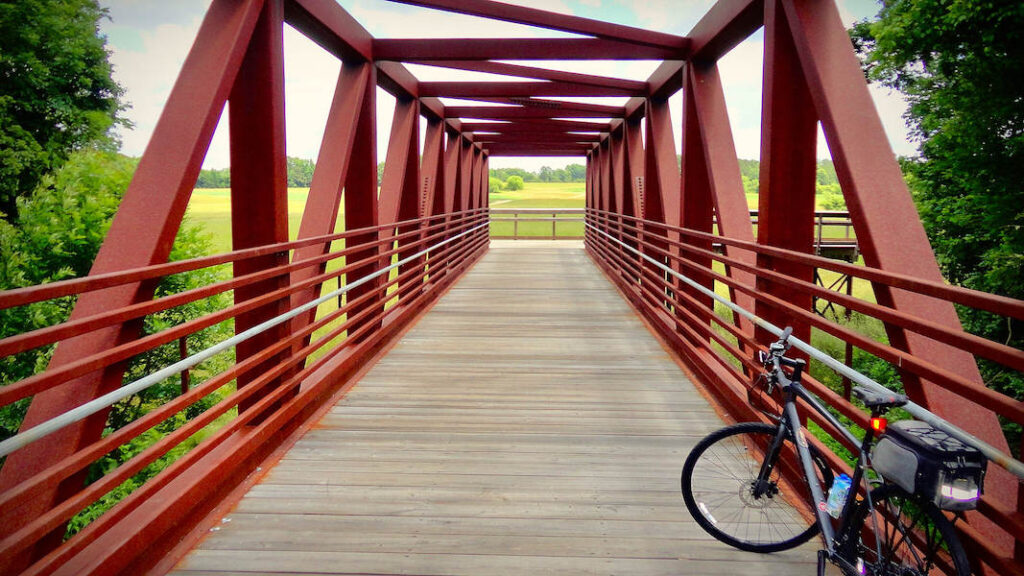
WE ADVOCATE …
for transformative investments in trails, walking and bicycling at the federal, state and local levels. To date, $22 billion+ in federal funding—including $1.38 billion+ in FY 2022—has supported 40,400+ projects via Transportation Alternatives and the Recreational Trails Program. In FY 2022, our advocacy alongside partners in 18 states yielded nearly $1.3 billion in state funding.
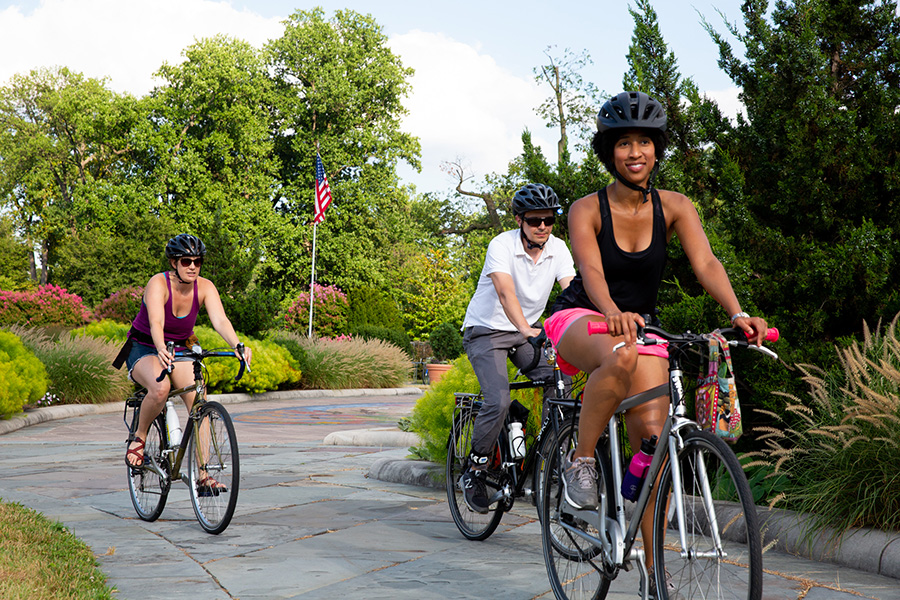
WE MOBILIZE …
people across the United States to advocate for safe walking and biking infrastructure in their communities and beyond. In FY 2022, more than 7,700 grassroots supporters around the country sent 10,000+ messages to decision-makers in support of trails and active transportation.
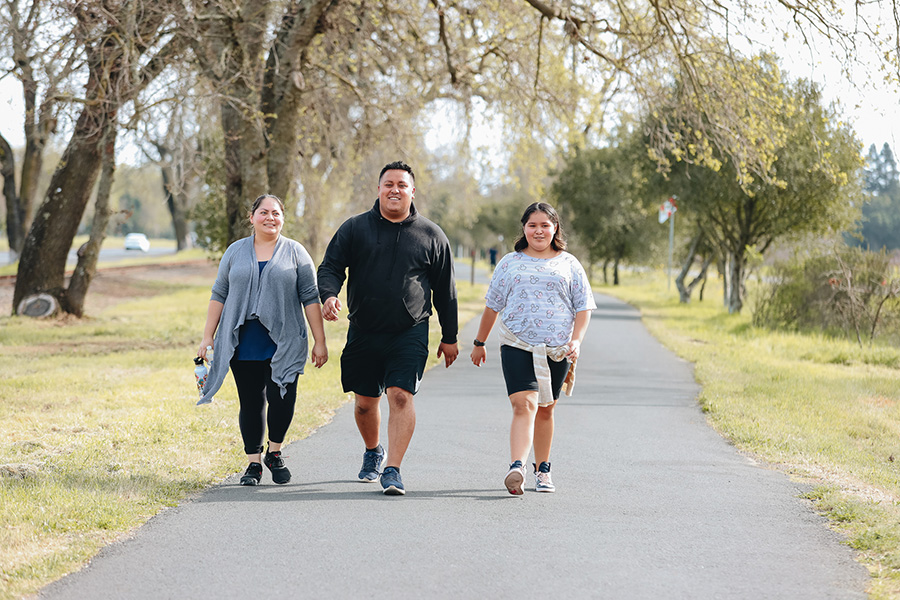
WE COLLABORATE …
with thousands of partners, including national organizations; federal, state and local agencies; public leaders; and grassroots advocates to create and connect trails and trail networks, and expand the trails movement. A highlight of the year included our national Celebrate Trails Day, where we partnered with nearly 200 organizations across America, bringing greater awareness to the impact of trails nationwide.
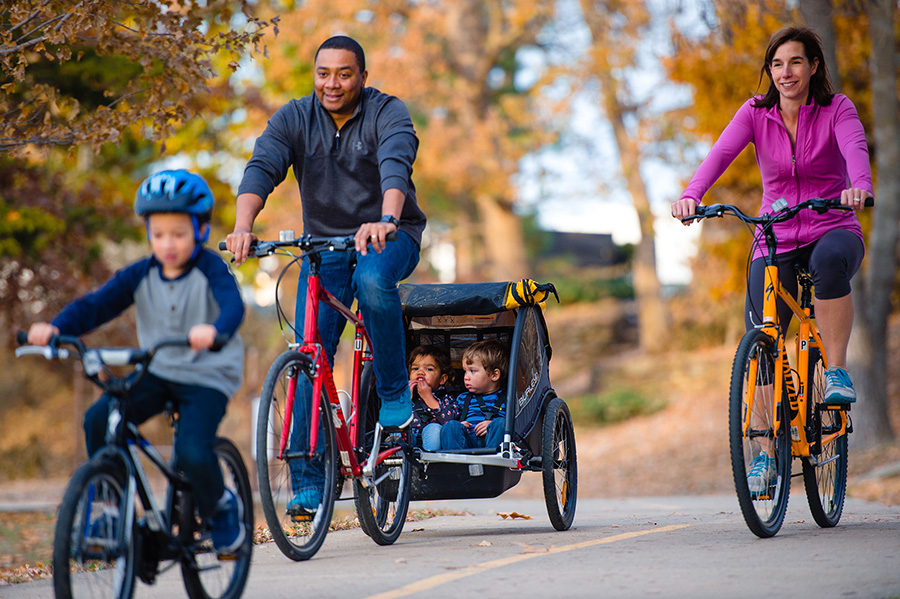
WE HELP SECURE FUNDING …
to develop trail networks that create healthy, thriving communities and serve as models for the country. In collaboration with partners across our TrailNation™ portfolio and the Great American Rail-Trail®—which collectively span 27 states and 11,000+ miles—we have helped direct hundreds of millions of dollars in public and private funds to trail network projects in the past decade.
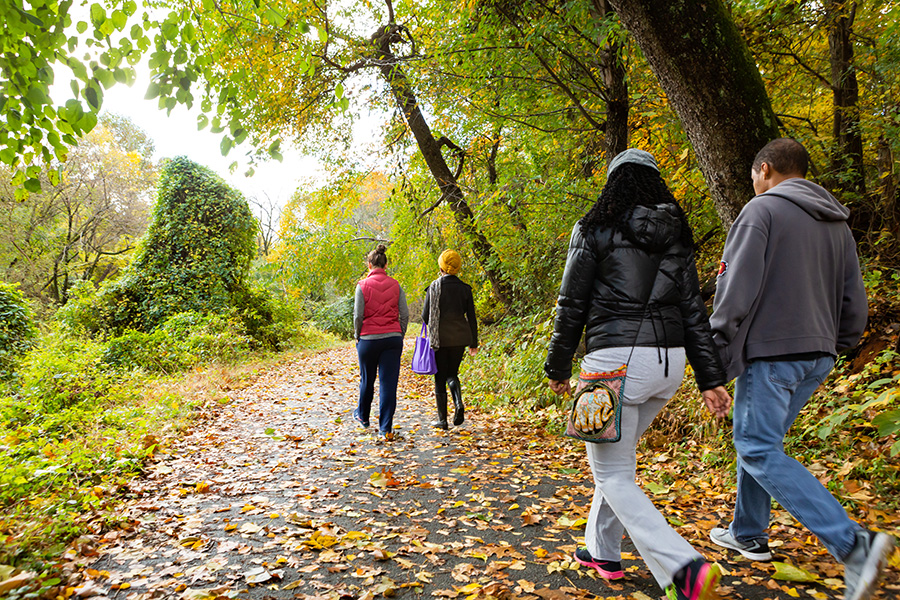
WE SUPPORT TRAIL BUILDERS …
by providing best-practices and trail planning resources, technical support and capacity-building grants to rural, suburban and urban communities seeking to connect their trail systems and create joyful, vibrant, equitable and inclusive public spaces. Since 2008, we’ve awarded $2.6 million+ in the form of 354 trail development grants to 209 organizations in 33 states and Washington, D.C. Through our TrailNation Collaborative, we work with 6,000+ professionals to accelerate trail network development nationwide.
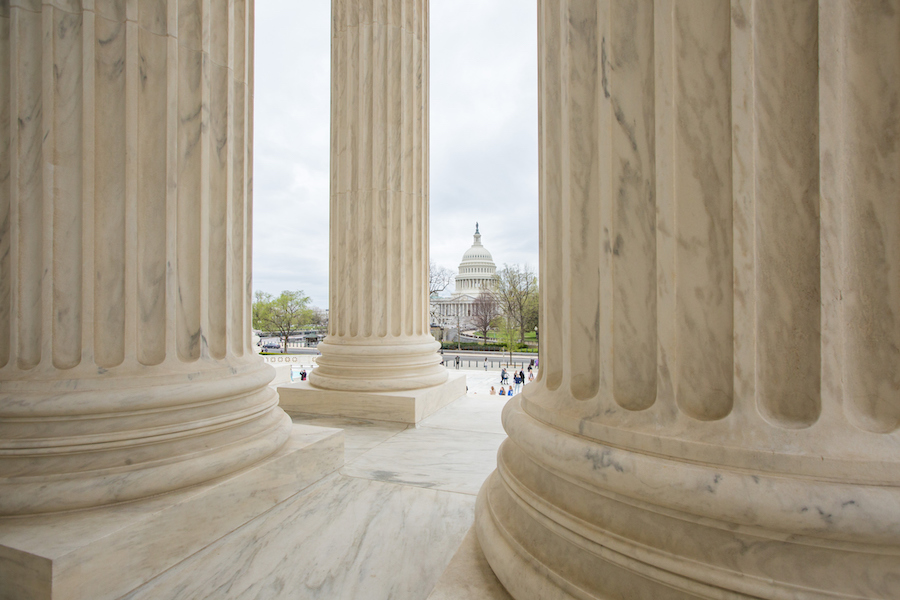
WE PROTECT TRAILS …
continuing to lead a 30-years-plus effort to shape the legal framework around rail-trails and defend them in the courts. Since 1986, we’ve been involved in 60+ legal cases, including landmark state and federal cases that have laid the groundwork for the national trails movement.
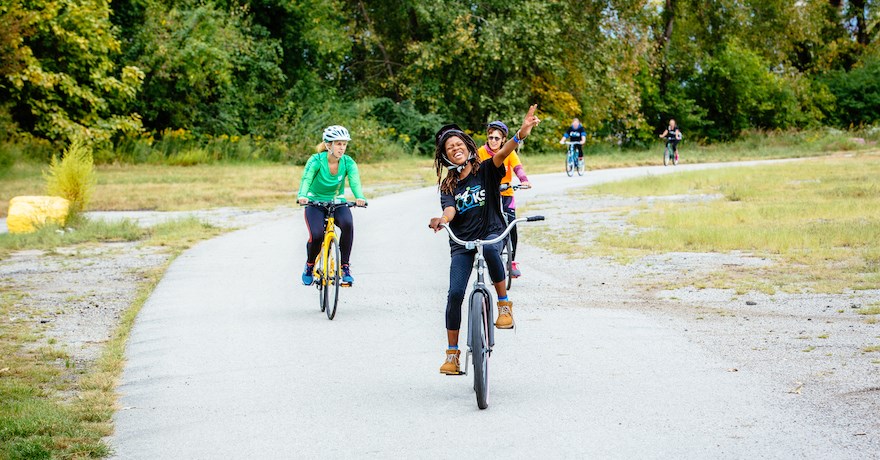
WE SPEAK OUT …
about the transformative power of trails, encouraging their use and generating demand. In FY 2022, we connected millions of people to trails via TrailLink.com™ and engaged millions of people in loving and supporting trails via our #CelebrateTrails and #TrailMoments campaigns, and our national storytelling platforms.
IMPACT REPORT FY 2022 SECTIONS
President’s Message • Our Vision • TrailNation • TrailLink • Great American Rail-Trail • Trail Advocacy • Trail Building • Experiencing Trails • Finances • Team RTC

TrailNation
Through our TrailNation™ initiative, Rails-to-Trails Conservancy (RTC) is collaborating with 300+ trail organizations, active transportation advocates and public leaders to create model trail networks in nine diverse regions around the country. These learning laboratories are demonstrating the benefits of trails to communities and showing what’s possible when trails are central to our lives.
Equitable trail development is a critical factor in how RTC approaches regional trail-network development. This means promoting trail access for all, advocating for critical funding and supporting community-led work.
Learn how these investments made an impact around the country in fiscal year (FY) 2022.
TRAILNATION PORTFOLIO
- Baltimore Greenway Trails Coalition: MD
- Bay Area Trails Collaborative: CA
- Capital Trails Coalition: MD, VA, DC
- Caracara Trails: TX
- The Circuit Trails: PA, NJ
- Industrial Heartland Trails Coalition: NY, OH, PA, WV
- The Miami LOOP: FL
- New England Rail-Trail Network: CT, MA, ME, NH, RI, VT
- Route of the Badger: WI
Promoting Equitable Trail Access
Baltimore Greenway Trails Coalition

“Youth groups in Baltimore will benefit greatly from the opportunity for greater access to trails and recreation. The Panther Outdoor Society has to travel out of the city often to find suitable trails for mountain biking practice.”
—Scott Johnson, Community Schools Coordinator, Belair-Edison Middle School
The Baltimore Greenway Trails Coalition is a developing 35-mile trail system that will connect 75 diverse neighborhoods—safely linking people of all ages and abilities to the city’s diverse cultural amenities and destinations, outdoor resources, business areas and employment centers.
Last year, RTC invested $35,500 to support community organizations in designing and implementing programs and events so residents—including Baltimore’s youth cycling community—can enjoy increased access to their trails and public spaces. These grants are building crucial organizational capacity while inspiring neighborhoods to connect with each other and experience all the benefits of the city’s developing trail network.
Related: What’s Happening With Project to Connect Baltimore’s Trails? (Baltimore Banner)
Route of the Badger
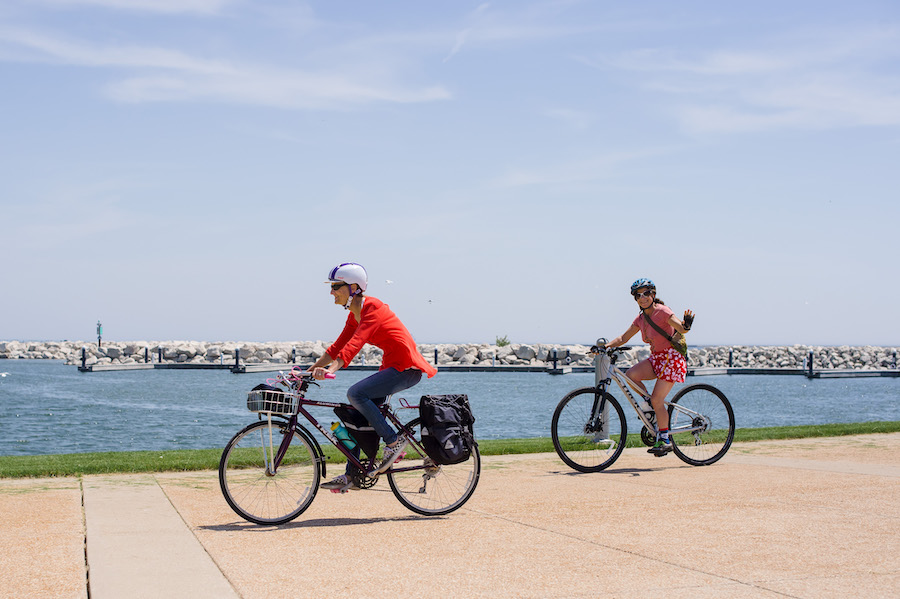
“We see the equitable trail-development process for a world-class linear park as an opportunity for us to come together to create a new vision for the corridor, which is currently plagued with serious challenges. The only way for us to change that is to build a new and better reality—with and for all the wonderful people and businesses here.”
—Cheryl Blue, Executive Director, 30th Street Industrial Corridor Corporation
The Route of the Badger is a developing 700-mile regional trail network that is connecting rural and urban communities in seven counties in Southeast Wisconsin. The network is connecting residents to jobs, neighborhoods, schools, parks and cultural attractions—with a focus on areas where there is no safe access to trails.
In Milwaukee, RTC is collaborating with a local partnership team to transform the 30th Street Corridor into a space that will deliver on opportunities for outdoor access, active transportation and economic development in the city’s Northwest neighborhoods. With support from a $200,000 grant from the Catena Foundation, awarded in 2022, the team is embarking on a two-year equitable trail development process whereby residents and local organizations will help lead a vision for how safe recreational and active-transportation access along the corridor can be leveraged to generate equitable economic investments that benefit residents.
Bay Area Trails Collaborative
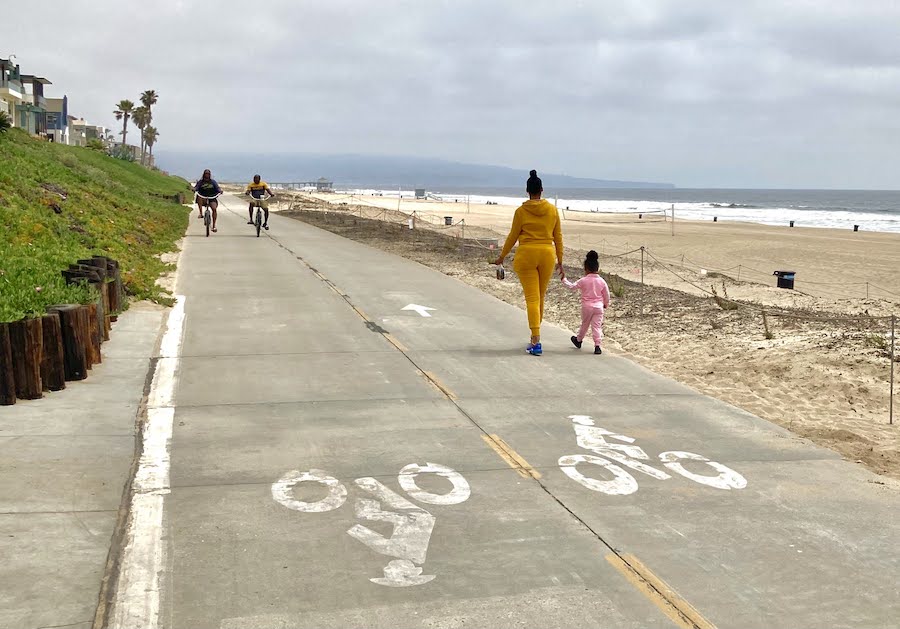
“The Bay Area regional trail network is an example of a bold project that can deliver affordable, environmentally friendly transportation for millions, if the California state legislature prioritizes adequate funding.”
—Nick Josefowitz, SPUR, and Laura Cohen, RTC
The developing 2,600-miles-plus Bay Area regional trail network, led by RTC and the Bay Area Trails Collaborative, is connecting millions of people with safe walking, biking and rolling access across nine counties—while inspiring investments and building further support for this transformative project.
In 2022, advocacy efforts by RTC and partners helped secure a record $1.02 billion approved for walking, biking and trail projects via California’s competitive Active Transportation Program—a portion of which will support the creation of the Bay Area regional trail network, which is 66% complete.
RTC continues to explore new funding and connectivity opportunities to fill gaps in the trail network, which was recently included in the Metropolitan Transportation Commission’s new active transportation plan.
Related:
- Explore the Network’s Interactive Map
- Commuting Across and Exploring the Bay Area Will Become More Accessible to Millions of Residents via 2,604 Miles of Connected Trails
- Stitching the Bay Area’s 2,600 Miles of Trails Together Is a Goal of New Collaborative (San Francisco Chronicle)
- What We Need: Smart, Affordable Transportation (Capitol Weekly)
Capital Trails Coalition
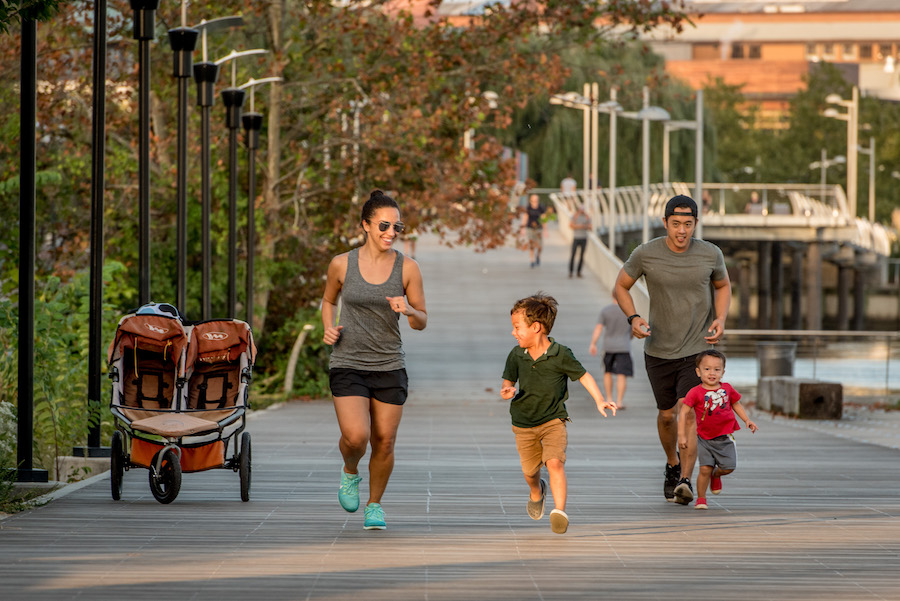
“We know there’s more work to do to keep up the momentum for continued expansion of the trail network. But this week makes clear that, nationwide, trails and active transportation are ready to compete and be an increasingly important part of the transportation fabric.”
—Kevin O’Brien, Washington Area Bicyclist Association
Through the Capital Trails Coalition, RTC and partners are leading an effort to develop and connect trails and safe walking and bicycling routes across 800 miles in the Washington, D.C., region.
In August 2022, the coalition received a $30 million grant through the competitive federal RAISE program (via the U.S. Department of Transportation) to fund two priority trail projects that will expand the reach of the trail network—connecting more people to parks across Maryland, Southeast D.C. and Virginia. These crucial routes will be transformative to the surrounding communities—creating new low-stress bike-ped options for recreation and transportation in one of the city’s most underserved areas.
Related: Big Wins for Priority Trails (Capital Trails Coalition)
The Miami LOOP
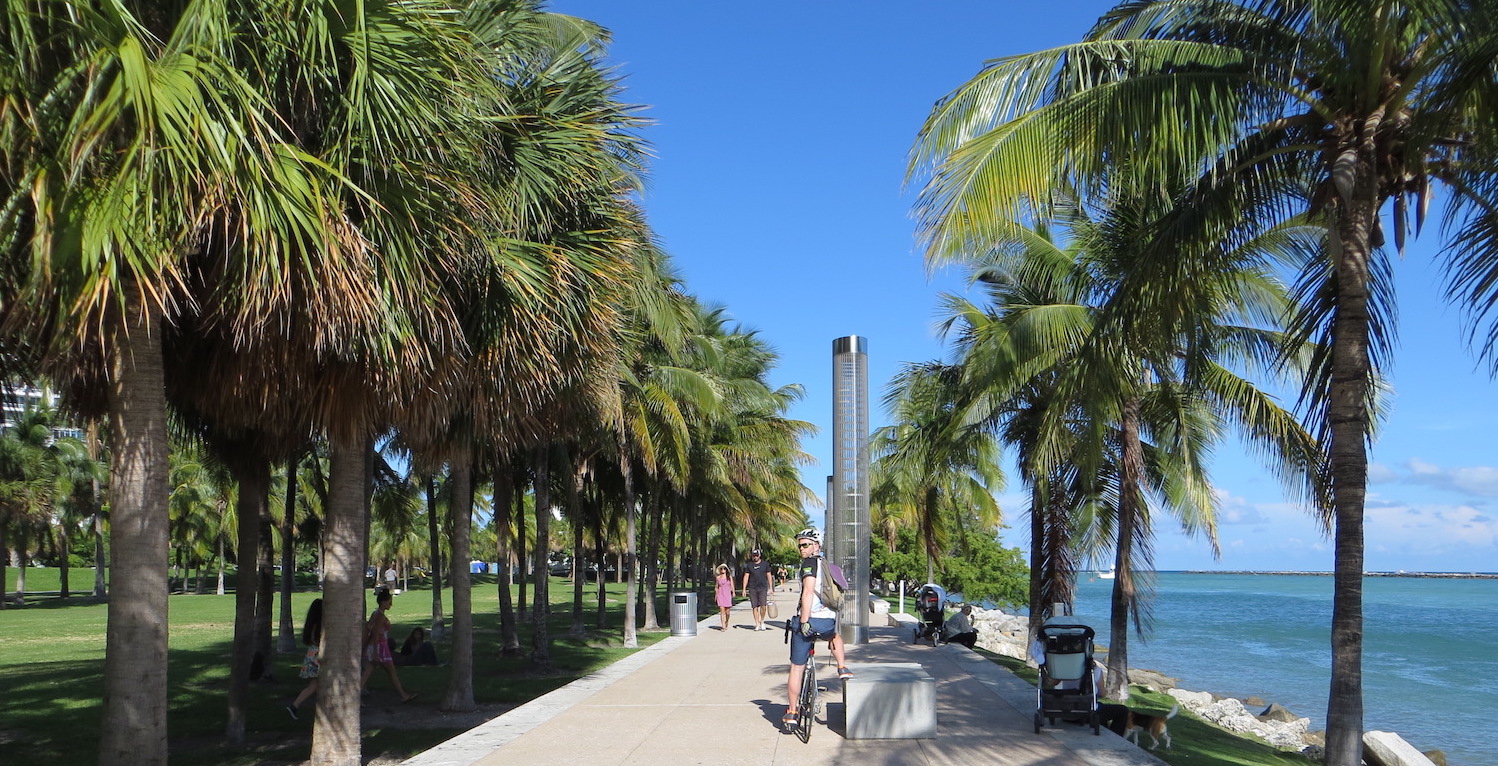
The Miami LOOP is a developing 225-mile trail vision to expand trails and safe walking and bicycling options across Miami-Dade County in order to strengthen local economies, reduce the area’s carbon footprint and improve health and wellness.
Support for Florida trails and active transportation continues to grow through this impactful work—with more than $26.7 million in state and federal funding secured by RTC and partners in 2022 to help build new trails and improve existing trails that will connect more of the county’s residents and visitors to safe recreation and commuting options. The funding is part of the cumulative estimated $200 million in federal and state investments secured for this county-wide trail network.
The Circuit Trails
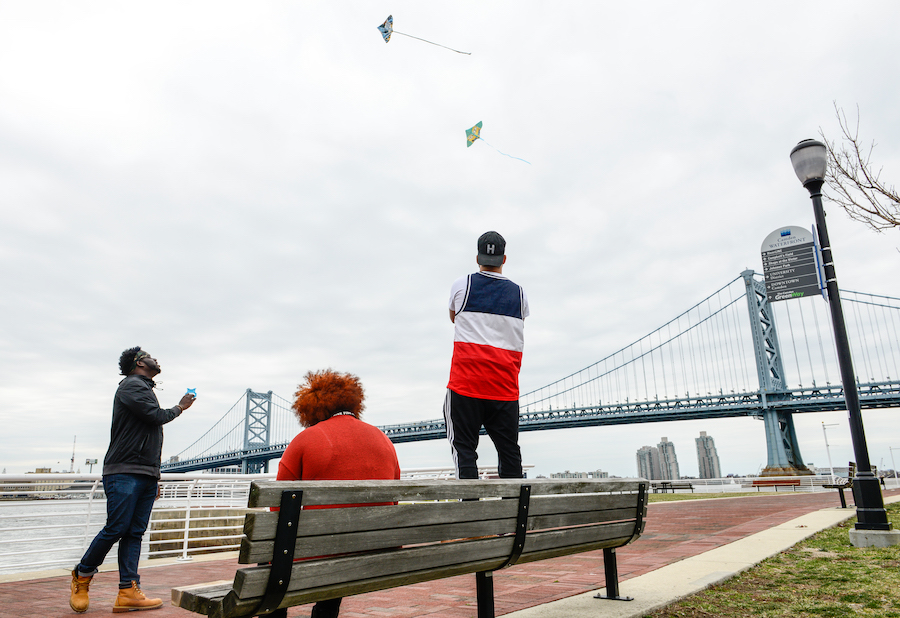
“With the help of the Circuit Trails street team, we were able to engage locally on the ground with communities that we otherwise wouldn’t have the capacity to reach. Being a smaller nonprofit with limited staff, this resource was so impactful in helping us spread the word about free programming along our riverfront trails. We are thankful that we were able to team up with the Circuit Trail street team on this initiative and raise local awareness about the amazing hidden trails available to the community.”
—Stephanie Phillips, Riverfront North Partnership
The Circuit Trails is a developing urban network of multiuse trails in Greater Philadelphia and southern New Jersey that is building on the region’s existing infrastructure to connect people to jobs, neighborhoods and parks across 800 miles in nine counties.
In 2022, the Circuit Trails celebrated 10 years of progress, having raised $240 million to date and grown the network to 374 miles of trails on the ground serving millions of people. Federal, state, local and foundation dollars helped create 36 new miles of Circuit Trails in FY 2022, with further state funding secured to create a critical walking and bicycling link between the city of Camden and its suburbs—protecting residents and visitors from one of the state’s most deadly roads for pedestrians.
RTC is raising awareness of the trail network, with a short-term goal of 500 miles on the ground by 2025. Through an innovative, inclusive regional marketing strategy, RTC seeks to build engagement with, and support for, the region’s trails among diverse audiences, while utilizing inclusive and welcoming language that creates authentic representation of trail use and users’ experiences.
Related: Must-See Circuit Trails Around South New Jersey/Greater Philadelphia (@theglobalghanagirl)
Caracara Trails
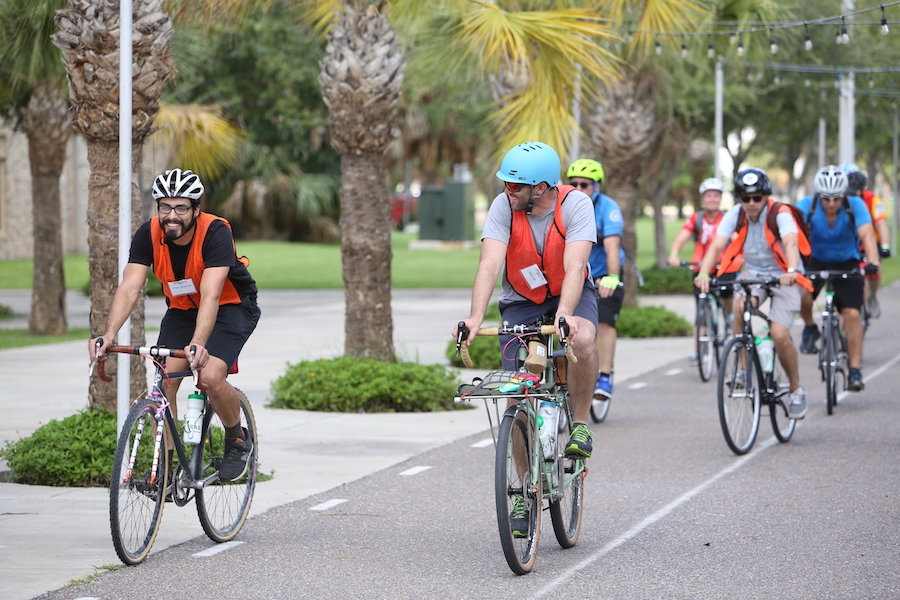
The Caracara Trails is a vision for a 428-mile trail network that will link the rich natural, cultural and historical resources in Texas’ Lower Rio Grande Valley—creating a unified regional identity for outdoor tourism, promoting healthier lifestyles and generating a new sense of community pride for the people who live there.
Momentum continues to build for the Caracara Trails network. In FY 2022, RTC worked with a local organization, cdcb | come dream. come build. to center the leadership for the Caracara Trails project in southern Texas—an evolution made possible by the growing and diverse coalition of partners and advocates that are working to bring active transportation and active tourism to Cameron County. RTC also invested $20,000 in grant funding to further support trail programming and community trail use through Tu Salud Si Cuenta!, a nature-based program that’s activating existing trails and building more personal connections and support for the regional vision.
Related: Seven Sensational New Rail-Trails to Celebrate in 2022
Industrial Heartlands Trails Coalition
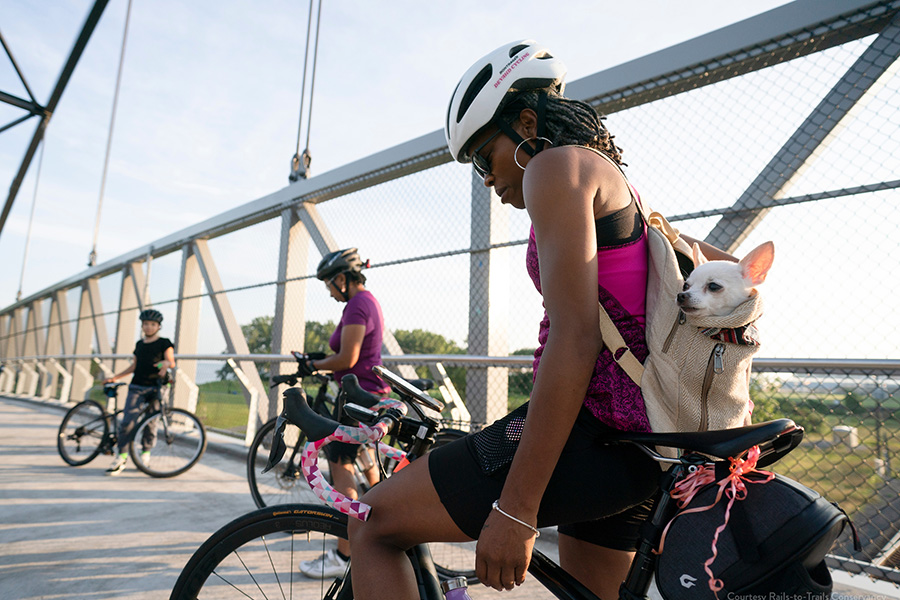
The Industrial Heartlands Trails Coalition is building momentum to connect 51 counties across Ohio, West Virginia, Pennsylvania and New York with 1,500 miles of multiuse trails.
In 2022, multiple efforts helped further the completion of key gaps and the larger project vision. In eastern Ohio, coalition members leveraged RTC’s Ashtabula to Pittsburgh (A2P) Feasibility Study to secure support from decision-makers for trail development along Little Beaver Creek in Columbiana County, a critical project for ensuring a safe, seamless off-road connection to the larger network.
Additionally, the Pymatuning Valley Greenway project—a vital, incomplete section of the Ohio to Pennsylvania Corridor (Ashtabula to Franklin)—was awarded two major grants totaling $1.54 million to help complete the eventual 19.5-mile trail linking Dorset Township to the Pennsylvania state line.
New England Rail-Trail Network
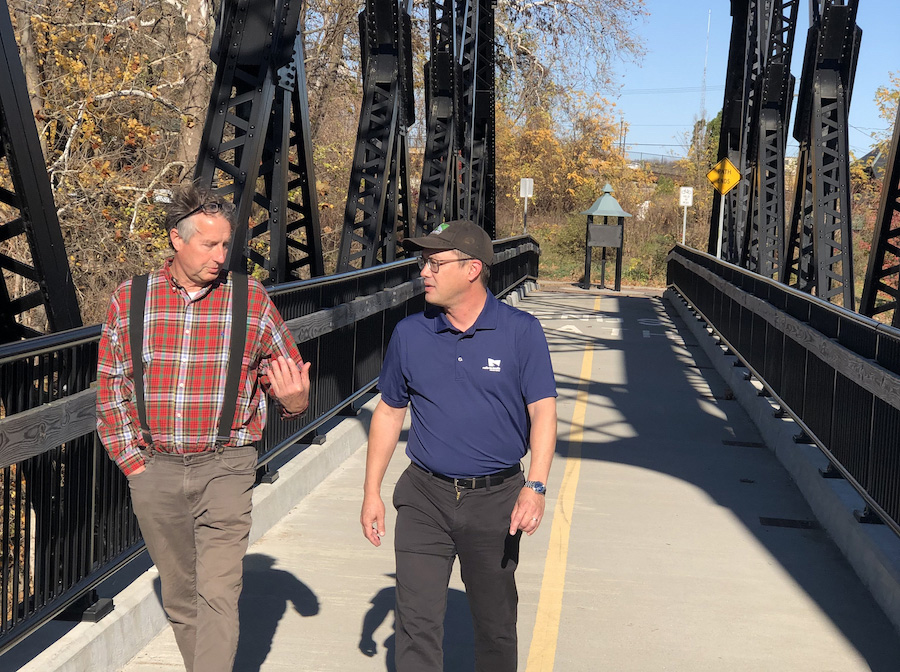
The New England Rail-Trail Network is working to unite the region’s six states—Connecticut, Maine, Massachusetts, New Hampshire, Rhode Island and Vermont—across a 1,000-mile multiuse trail network.
Over the past couple years, RTC has been spearheading an effort with 30+ partners to form a coalition to channel the energy, expertise and influence needed to grow support for, and complete the remaining half of, this trail interstate vision that has the potential to inject billions of dollars a year in health, economic and tourism benefits in New England. In 2022, RTC advocacy helped generate momentum, as well as legislative and regional support, for the project across the state of New Hampshire. Grassroots advocacy support at the local and state levels helped highlight the demand for safe walking, biking and trail access across the state and its neighbors.
IMPACT REPORT FY 2022 SECTIONS
President’s Message • Our Vision • TrailNation • TrailLink • Great American Rail-Trail • Trail Advocacy • Trail Building • Experiencing Trails • Finances • Team RTC

TrailLink
These past several years of enduring demand for trails underscore how vital—and transformative—trails are to people’s lives. Throughout the United States, more people are using trails than ever before, and in fiscal year (FY) 2022, TrailLink.com™ sought to connect millions of new and tried-and-true trail users to safe places to walk, bike and connect to nature—in their own communities and beyond.
Through Rails-to-Trails Conservancy’s (RTC’s) national trail-finder website and app, we connected both new and longtime trail users with 16.5 million trail pages and 7.2 million maps.
Additionally, some 7.3 million people accessed TrailLink’s unique database of over 40,000 miles of mapped multiuse trails, including more than 25,000 miles of rail-trails.
To date, TrailLink has served some 83 million users and received over 530 million views—with a continued commitment to make trail use in America as inclusive and accessible as possible to people of every age and ability, in every community.
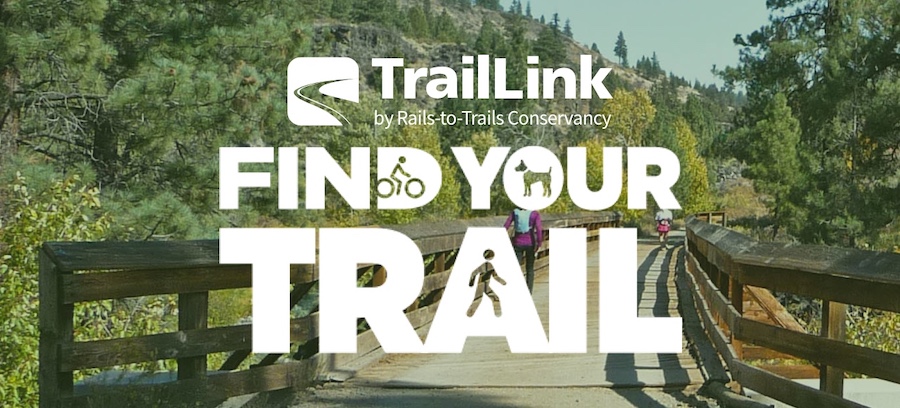
Feedback From TrailLink Users:
“People of all abilities can use this to get out of the house and enjoy nature. The maps are great, and the reviews are very helpful!”
“This app not only helps me find new trails, but it also has good reviews about the current conditions of the trails.”
“I have found this app to be so helpful in making sure that we can navigate the bike trails in our area!”
“Great quick research tool to find new places to explore!”
#WeArePlay Spotlight from Google Play
In the summer of 2022, Google Play launched #WeArePlay, a new series featuring the people behind popular Google Play apps and games. RTC’s Frederick Schaedtler received this national recognition for leading the effort to develop the TrailLink app, which allows users to explore a database of over 40,000 miles of mapped multiuse trails, as well as upload reviews and photos from their trail experiences to share with other outdoor enthusiasts.
TrailLink’s Reach Across the Country
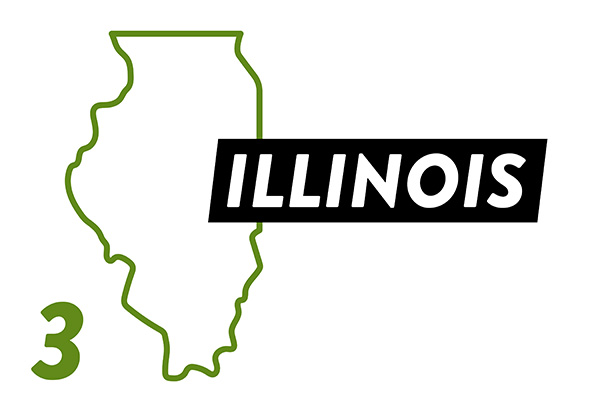
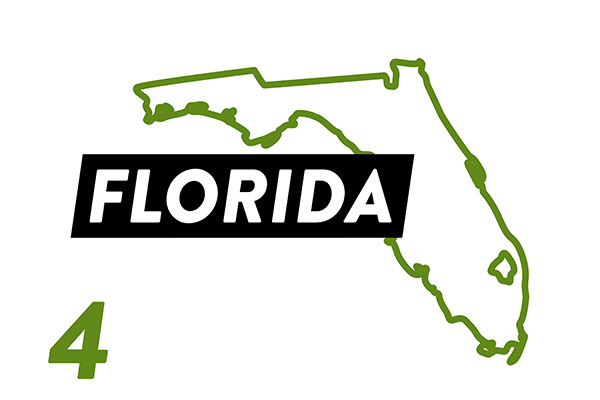
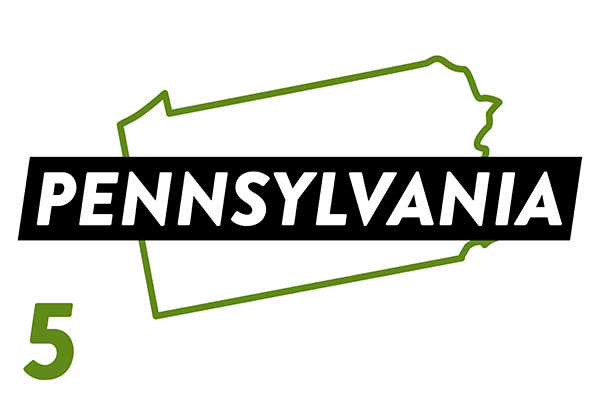
Most Popular Trails in 2022
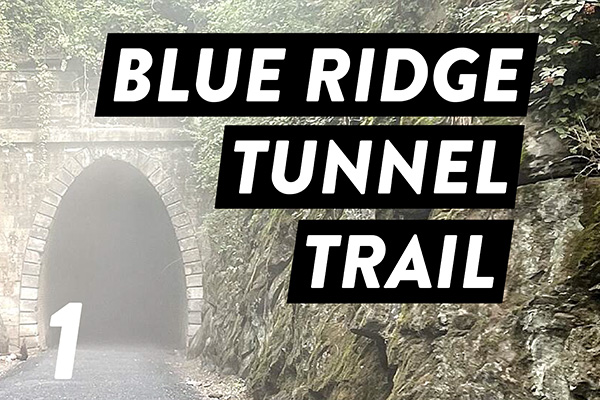
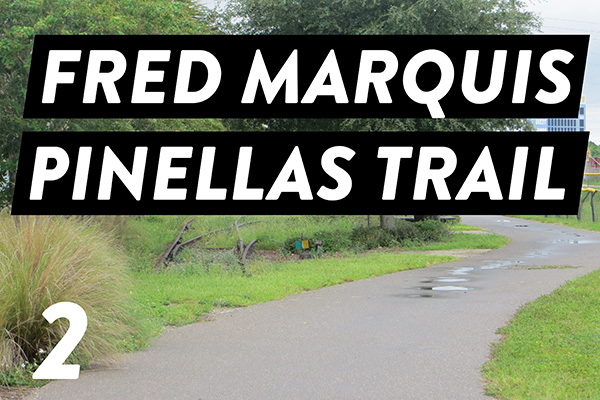
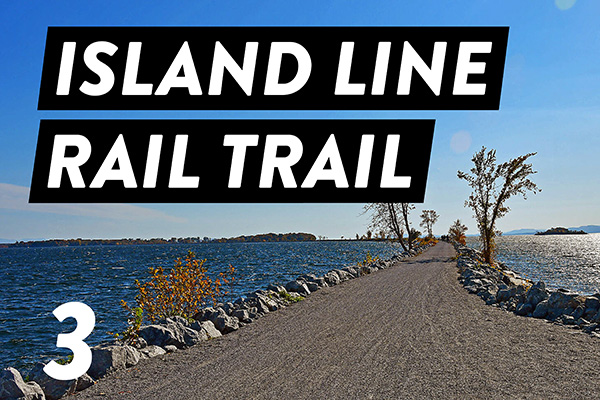
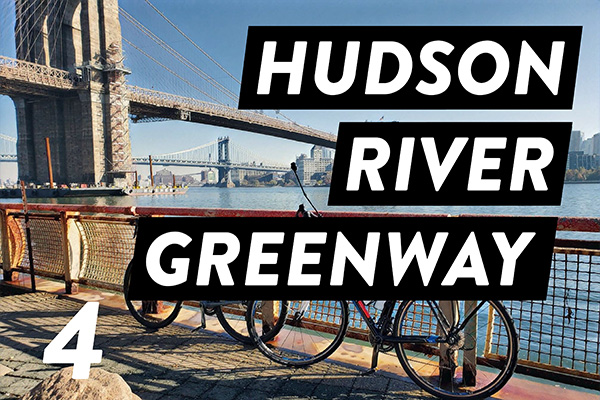
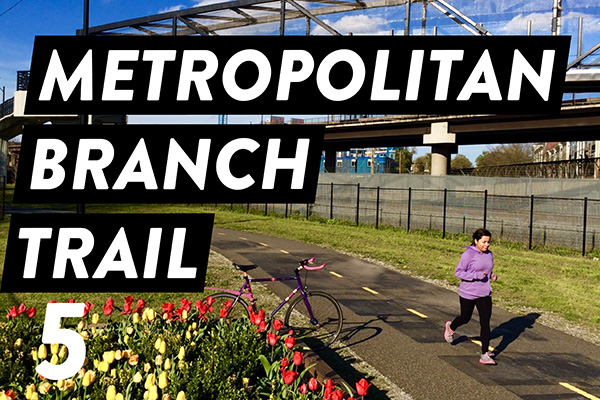
IMPACT REPORT FY 2022 SECTIONS
President’s Message • Our Vision • TrailNation • TrailLink • Great American Rail-Trail • Trail Advocacy • Trail Building • Experiencing Trails • Finances • Team RTC

Great American Rail-Trail
There was a lot to celebrate as we marked the end of another great year for the 3,700-mile Great American Rail-Trail®, an epic trail in the making across 12 states and the nation’s capital—between Washington, D.C., and Washington State. Hundreds of partners are working together with a collective vision—in communities large and small—to complete this icon for the country.
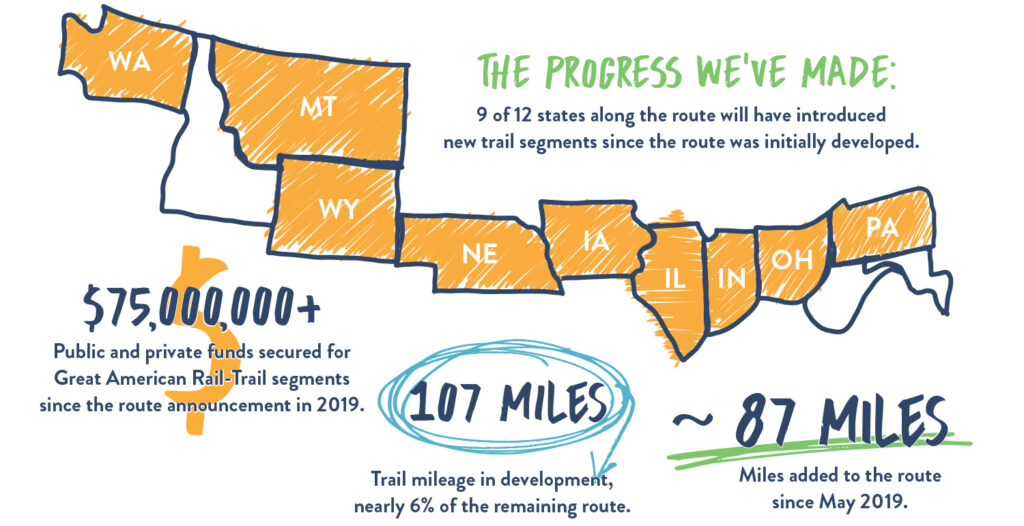
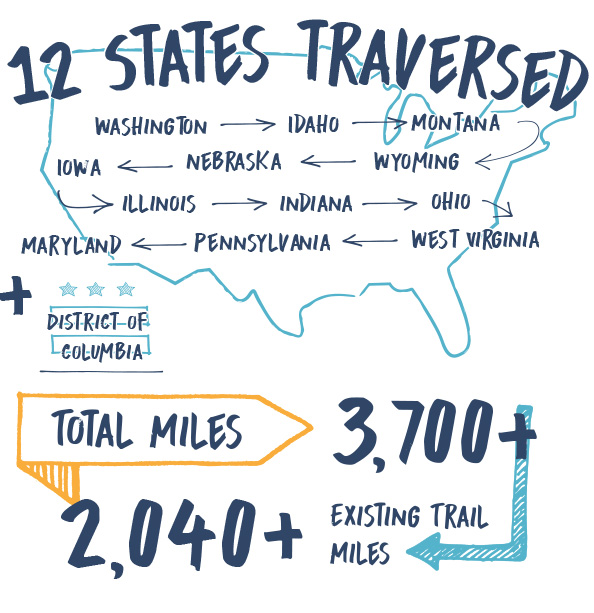
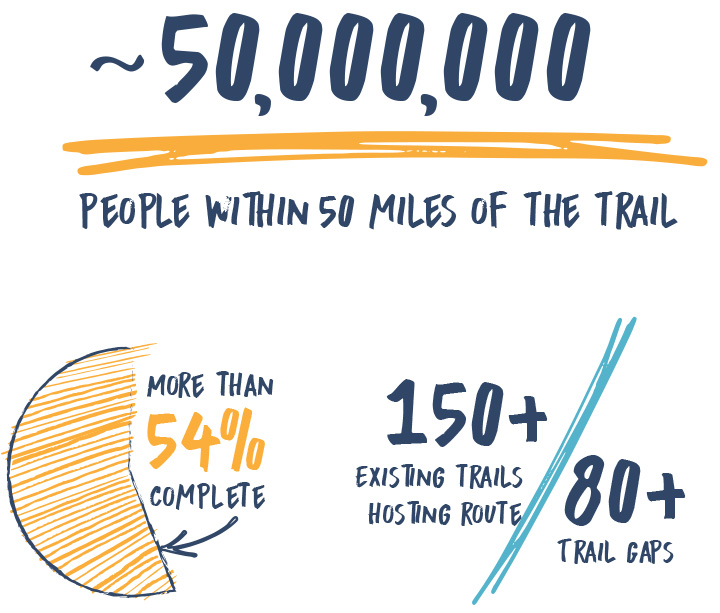
The incredible energy and efforts of local partners resulted in a record $31.2 million in public and private funds raised in fiscal year (FY) 2022 to help complete gaps along the route—the highest amount secured annually for the Great American.
With the national focus and demand for trails at their highest point these past few years, we continued our work to build out the cross-country route in FY 2022, which is now more than 54% complete with 2,050+ miles.
Economic Potential of the Great American Rail-Trail
“The numbers make clear that the Great American is a win for long-term economic growth in communities all along the route.”
—Kevin Belle, Great American Rail-Trail Project Manager
In May 2022, Rails-to-Trails Conservancy (RTC) and Headwaters Economics released the results of a study examining the economic potential of the Great American Rail-Trail, which showed that the project will have a major economic impact routewide.
With support and investment by host communities, the Great American could generate an estimated $229 million+ in visitor spending and add $161 million to the GDP each year. Additionally, it was found that over 10 years, the Great American is expected to support more than 25,000 jobs across diverse sectors.
Related: Great American Rail-Trail Helps Revive Small Towns (National Geographic)
Iconic Infrastructure Advances Along the Great American
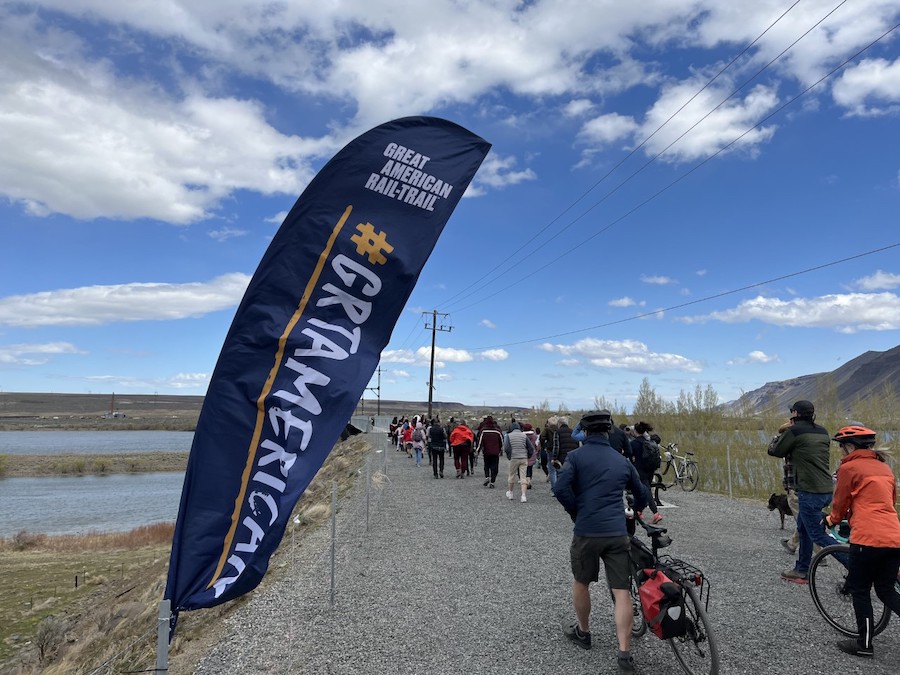
And what an incredible year it was for many communities along the route, who saw some major milestones in FY 2022.
In April, RTC and partners in Washington State celebrated a big win with the opening of the Beverly Bridge, a $5.5 million trestle retrofit along the developing 285-mile Palouse to Cascades State Park Trail. The long-awaited bridge rehabilitation fills what was once a historically impassable trail gap over the Columbia River, and represents a major milestone in an effort to make cross-state tourism a reality.
Then in May, trail advocates celebrated the opening of another landmark, the 975-foot trestle in Tekoa, a longtime anchor for the eastern end of the Palouse to Cascades State Park Trail, near the Idaho border.
“There is no Western Washington. There is no Eastern Washington. With the Beverly Bridge, there’s one Washington.”
—Washington Gov. Jay Inslee
WORLD RECORD HOLDER COMPLETES 475-MILE WHEELCHAIR TREK ON THE GREAT AMERICAN
In October 2022, Guinness World Record Holder and disability rights advocate Ian Mackay completed a 12-day, 475-mile ride along the easternmost portion of the 3,700-mile Great American Rail-Trail, from Washington, D.C., to Columbus, Ohio. A project of Ian’s Ride, which he founded in 2017, in collaboration with the United Spinal Association (USA) and RTC, the ride was designed to raise awareness around the importance of, and need for, more access to the outdoors for people with mobility impairments and other disabilities.
Learn more about Ian’s Great American Ride.
Capturing Once-in-a-Generation Opportunities for Trails, Walking and Biking
Related:
IMPACT REPORT FY 2022 SECTIONS
President’s Message • Our Vision • TrailNation • TrailLink • Great American Rail-Trail • Trail Advocacy • Trail Building • Experiencing Trails • Finances • Team RTC

As the leading advocacy organization for trails, walking and bicycling in America, Rails-to-Trails Conservancy (RTC) works with some 600 organizations and hundreds of thousands of grassroots supporters to advocate for the federal, state and local policy changes and vital investments necessary to create, connect and maintain the nation’s multiuse trails.
Since 1986, RTC has shaped the policies that make trails possible while helping to secure billions of dollars for trails and active transportation projects in all 50 states and Washington, D.C.
In fiscal year (FY) 2022, more than 7,700 grassroots supporters around the country sent 10,000+ messages to decision-makers in support of trails and active transportation.
An unprecedented demand for trails in recent years—and the passage of a historic infrastructure bill in late 2021—has presented an opportunity moment for trails, walking and biking, with the potential to create lasting, transformative impact for thousands of communities. We’re leading in this once-in-a-generation moment, elevating and championing innovative funding programs in Congress to accelerate efforts to create, connect and maintain trail and active transportation networks nationwide—and deliver on our goal of making safe walking and biking routes accessible to everyone.
In the states, we are strengthening partnerships and supporting grassroots advocacy. In FY 2022, that work secured more than a billion dollars in funding for trails and active transportation.
Unprecedented Opportunities for Trails, Walking and Bicycling
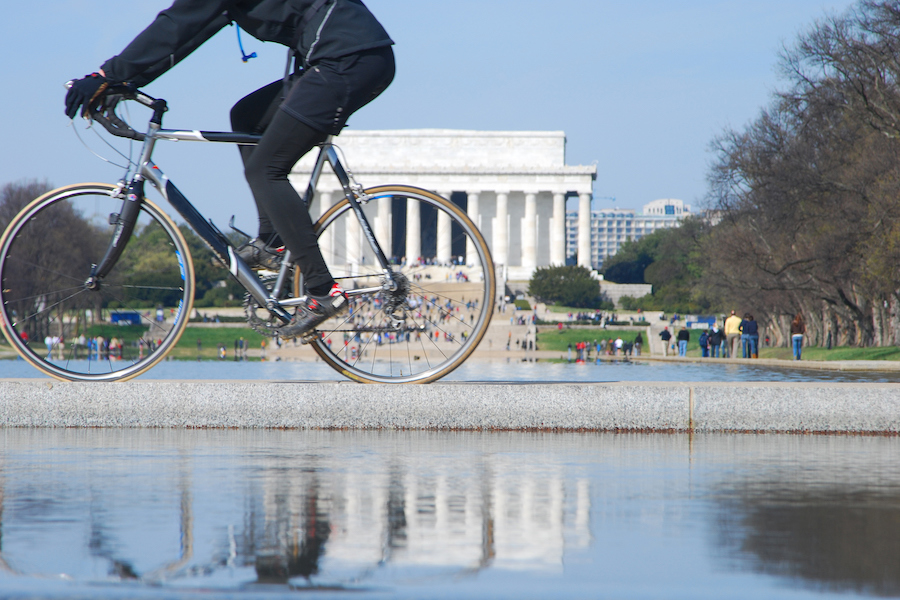
The adoption by Congress of the $1.2 trillion Bipartisan Infrastructure Law (BIL) in November 2021—combined with a massive demand for trails, walking and bicycling—has ushered in opportunities like never before to build out America’s active transportation networks.
In 2022, we elevated transformative programs we championed in the BIL. This includes championing support in Congress for the Active Transportation Infrastructure Investment Program (ATIIP)—a unique initiative, authorized in the BIL at $200 million per year—that will specifically fund the planning and construction of connected trail networks.
We also shared expertise and technical support with hundreds of communities—through webinar trainings and the sharing of curated information and alerts on relevant opportunities—to empower them to take advantage of the groundbreaking funding now available through transformative federal programs such as:
- Transportation Alternatives (TA), which grew by 70% (from 2018 to 2020) to $1.44 billion annually (2022 to 2026);
- the new Safe Streets and Roads for All (SS4A Program), which provides $10 billion through 2026 to support local initiatives aimed at preventing serious injuries and fatalities on our nation’s roadways—in support of the first-of-its-kind National Roadway Safety Strategy by the U.S. Department of Transportation (USDOT); and,
- the Reconnecting Communities Pilot Program (RCP), which invests $1 billion over five years to reconnect communities and eliminate historic barriers to equitable mobility and access, as well as economic development—with a focus on low-income communities and Communities of Color.
To date, $22 billion+ has been invested in 40,400+ trails and walking and bicycling projects through Transportation Alternatives (TA) and the Recreational Trails Program (RTP)—together the largest federal funding source for trails and active transportation in America.
Related: 18 Months In: What’s the Impact of the Bipartisan Infrastructure Law for Trails, Walking and Biking?
The Bipartisan Infrastructure Law (BIL), passed in 2021, included unprecedented investments in trails, walking and biking, and significant policy changes to increase investment in connecting trails, including:
- A nearly 70% increase for the legacy TA program (includes RTP) to an average of $1.44 billion per year
- Authorization of the innovative Active Transportation Infrastructure Investment Program at $200 million per year
- New safety- and climate-planning requirements that could lead to additional funding for trails where they contribute to addressing these issues
Learn about the new and innovative funding opportunities available for trails and active transportation on RTC’s federal funding page.
2022 RAISE Grants Underscore Urgency to Invest in Active Transportation Infrastructure
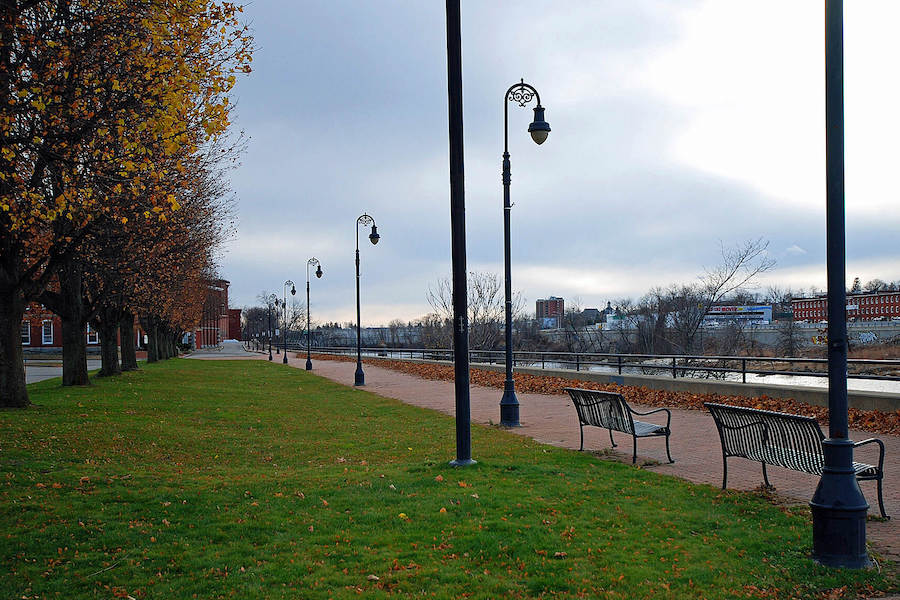
Through the competitive RAISE (Rebuilding American Infrastructure with Sustainability and Equity) program, the USDOT has demonstrated its recognition of trails, walking and biking as fundamental to transformative and equitable community design. In FY 2022, RTC supported communities across the nation in accessing resources and developing successful strategies that resulted in unprecedented funding for trails and active transportation in two separate rounds of awards.
The first round in November 2021 marked incredible success for trails, which received $183 million in funding and 19% of the total funds granted, and complete Streets safety measures received another 21% of the total (for a combined 40% of the total amount granted). Then in August 2022, the USDOT awarded $2.2 billion to 166 planning and capital investment projects—with a majority of projects accounting for the needs of bicyclists and pedestrians. The awards underscore the demand for trails and safe walking and bicycling routes that connect people to day-to-day destinations.
Related: Federal Grants RAISE the Bar for Active Transportation Investments
Billions of Dollars for Trails in the States
At the state level there was much to celebrate in FY 2022, as RTC and trail advocates helped secure nearly $1.3 billion in new and renewed funding for trails—surpassing FY 2021 funding.
California saw an historic victory, with the state dedicating a massive $1 billion+ investment for trails, walking and bicycling for the 2023 fiscal year. This record-level funding commitment, made possible by joint advocacy from RTC and partners statewide, will have a massive impact on building and connecting the state’s trails and walking and biking facilities.
The timely award came on the heels of the January 2022 release by RTC and the Bay Area Trails Collaborative of a comprehensive map outlining the region’s vision to connect 2,600 miles of trails across nine counties. An RTC TrailNation™ project, the Bay Area regional trail network will increase safe bike-ped access for millions of people and could generate as much as $6.6 billion annually for the California economy.
In collaboration with our grassroots supporters, RTC engaged in state-level advocacy in 18 states in 2022—resulting in huge funding wins and strengthened coalition building to achieve our strategic long-term funding goals.
Major victories were seen in Virginia, which allocated $79 million in state funds for trails and active transportation, and in Florida, where $70 million was allocated for trails, walking and bicycling. Investments were made to the Department of Transportation’s SUN Trail Program and from the State Transportation Trust Fund.
We aided the Circuit Trails Coalition in successfully securing $23 million for trails through the New Jersey state legislature, and helped lead successful grassroots outreach efforts in Nebraska that induced the legislature to restore funding for a trail project between Omaha and Lincoln—a key gap in Nebraska’s portion of the Great American Rail-Trail®.
Related: Record-Breaking Investments in California’s Trails Amid Major Demand
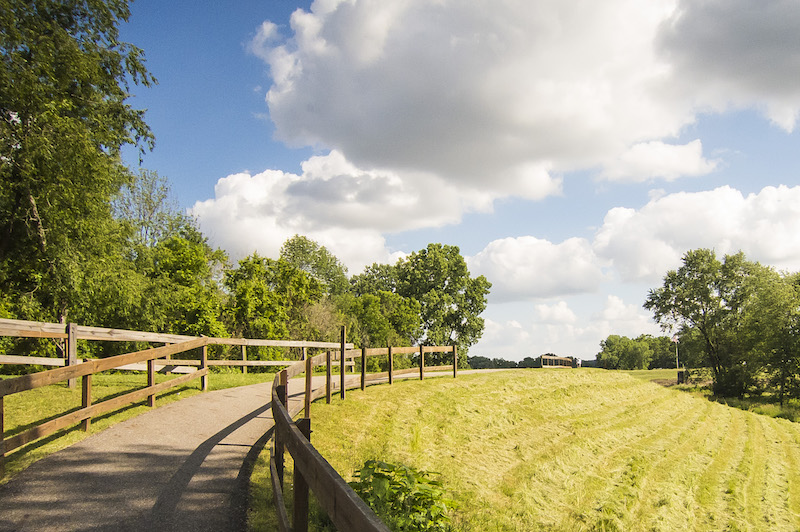
Expanding State Legislative Support for Trails Across the US
Conceptualized by RTC, the bipartisan Legislative Trails Caucus is an innovative policy model that’s growing support for trail funding and programming in state legislatures. In Indiana, Ohio and Wisconsin—established trails caucuses are moving the dial for both regional and statewide trail network development.
West Virginia, California and Michigan are pursuing similar models and exploring how this policy advancement can raise the bar for walking and bicycling programs and generate increased economic, health, environmental and active transportation benefits.
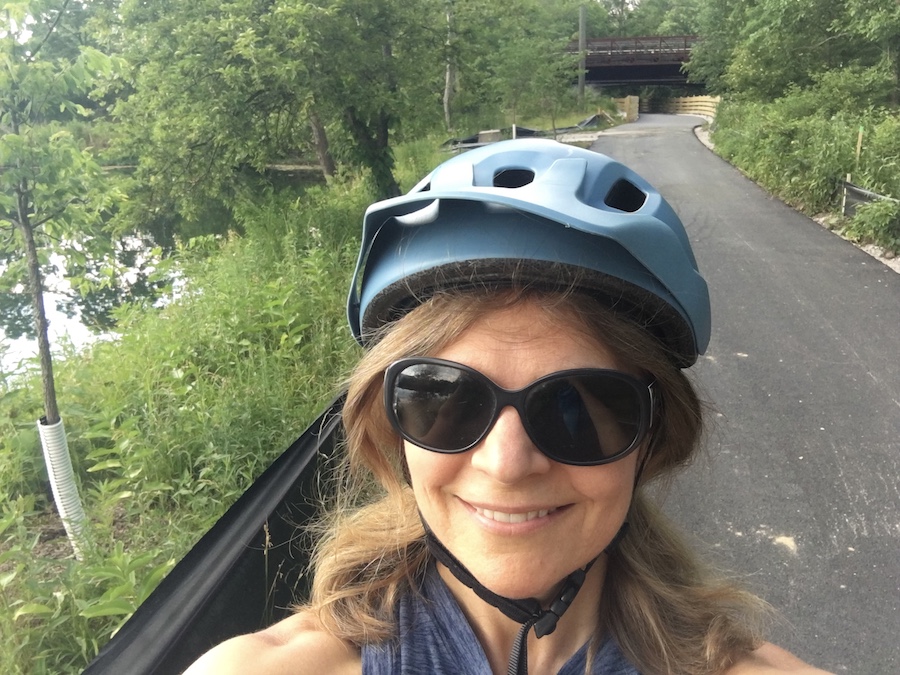
“I am really excited about the opportunity we have now to build out the … Great American Rail-Trail. I hope that will be at the top of the caucus’ agenda this year. And I think it will be prominent in the Statehouse … as we go into a budget cycle and look to start to fill in those sections that we still need to complete, that 50%.”
—Indiana State Rep. Carey Hamilton (D-87)
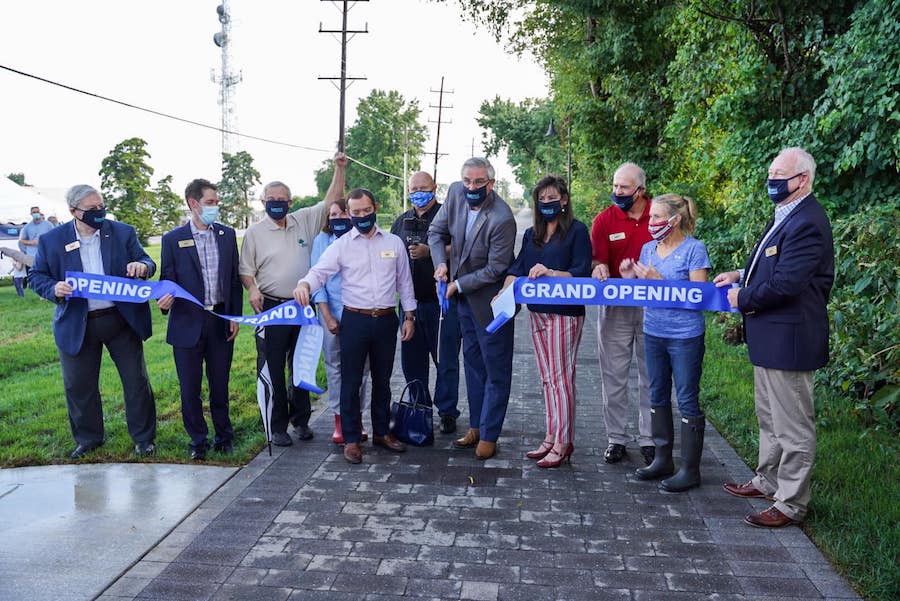
In the fall of 2021, Gov. Eric Holcomb declared 2021–2022 “Indiana’s Year of the Trails,” recognizing that a statewide trail system could be a “powerful tool for economic and community development.” Gov. Holcomb and the Indiana Legislative Trails Caucus, spearheaded by RTC and the Greenways Foundation of Indiana, are galvanizing support statewide for trails and the recommendations laid out in the 2021 Indiana State Trails Plan.
In 2021 and 2022, RTC recognized Gov. Holcomb and Rep. Carey Hamilton, respectively, as Doppelt Family Rail-Trail Champions for their leadership in championing trail development and the Great American Rail-Trail as an economic and tourism driver in the Hoosier State.

North Carolina Declares 2023 “Year of the Trail”
Using Indiana’s and Ohio’s enacting legislation as models, RTC’s coalition partners in North Carolina successfully prompted the General Assembly to pass a bill decreeing 2023 as North Carolina’s Year of the Trail. The Great Trails State Coalition is using this designation as a springboard to promote, and pursue new funding for, trails across the Tar Heel State.
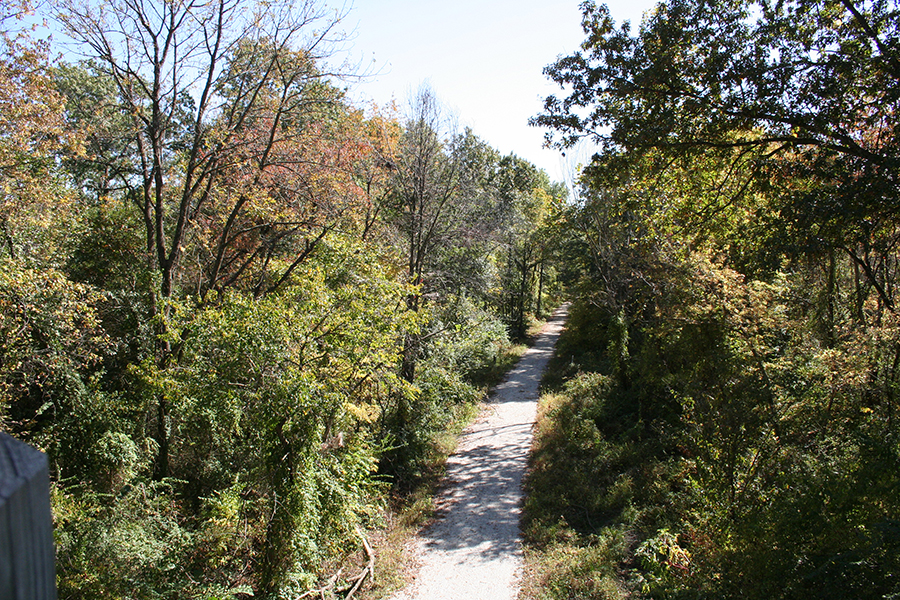
Missouri Celebrates Historic Railbanking of the Rock Island Corridor
In December 2021, Gov. Mike Parson momentously announced that the state of Missouri would officially take ownership of the 144-mile Rock Island Railroad corridor between Windsor and Beaufort for transformation into a multiuse trail—a project long championed by RTC and partners. The governor’s announcement marks the final step in railbanking the corridor, which—when developed—could have an economic impact on the 23 communities along the route.
An RTC analysis found that trails in Missouri contribute $507 million in economic activity annually—which could grow to $1.05 billion annually as trail connectivity improves. The planned Rock Island Trail will eventually intersect with the 240-mile Katy Trail and the 47-mile Rock Island Spur to create a nearly 400-mile cross-state trail loop between Kansas City and St. Louis.
IMPACT REPORT FY 2022 SECTIONS
President’s Message • Our Vision • TrailNation • TrailLink • Great American Rail-Trail • Trail Advocacy • Trail Building • Experiencing Trails • Finances • Team RTC

For nearly four decades, Rails-to-Trails Conservancy (RTC) has served as the nation’s foremost champion for trails, working with thousands of partners to establish and elevate best practices for creating, connecting and maintaining trails and active transportation networks.
As trails have become part of the fabric of American life, our focus has evolved. We’re elevating the impact that connected systems have on communities and regions, and supporting our nation’s trail builders by helping them access essential funding and technical support for their projects that connect people and places by trail.
Providing Trail-Building Resources
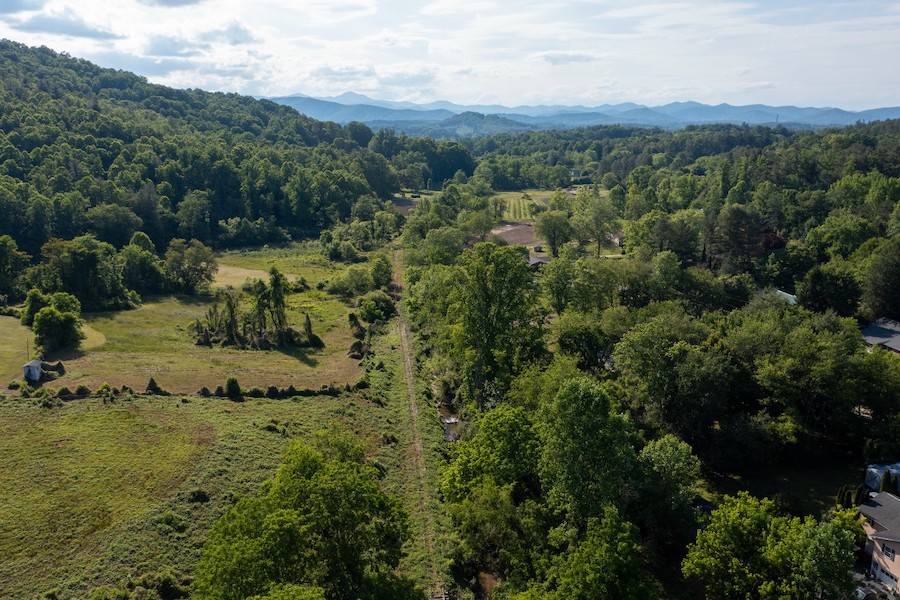
RTC is leading the movement in developing tools and resources that meet the most pressing needs facing trail builders and managers—from funding strategies, to approaches that center on equitable trail development, to strategies for connecting the nation’s trails, and engaging and activating these spaces.
In collaboration with a growing community of 6,000+ trail advocates and professionals, we seek ways to collectively tackle the biggest challenges—and embrace promising opportunities—in advancing plans to create, connect and maintain trails around the country.
Our Trail-Building Toolbox and free webinar series are designed to share that knowledge with trail professionals across the country and accelerate the pace of trail network development. In fiscal year (FY) 2022, RTC hosted 11 webinars viewed by more than 2,400 attendees, including current topics and issues facing the sector, such as federal transportation funding and the role of trail networks in housing stability.
Prioritizing Equity on America’s Trails

RTC is centered on developing resources and partnerships that will result in meaningful change and empowerment in America’s neighborhoods—particularly in underrepresented and under-resourced communities. That’s why we’re focused on doing what it takes to ensure every stakeholder in a community is a part of the process to envision and build the trail network, and will benefit when the project is complete.
RTC’s new Trail Building Toolbox resources elevate accessible trail design for people with disabilities and equitable trail development, providing comprehensive advice and best practices to assist planners in ensuring every stakeholder in a community is part of the trail development process and will benefit from their use.
Investing in Equitable and Inclusive Trails Nationwide
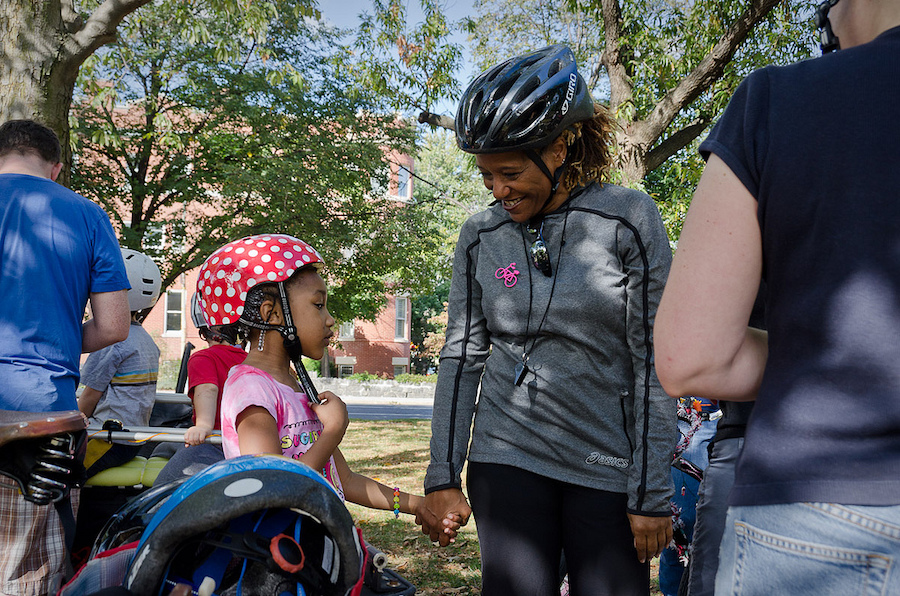
RTC awarded a combined $300,000+ to 25 local and national organizations through our 2022 Trail Grants Program to build organizational capacity and develop inclusive and equitable trail programming to engage residents in underrepresented and under-resourced communities. These awards were specifically geared toward projects designed to remove barriers to trail use, through programming and community-led initiatives, for low-income youth, women and Communities of Color.
Since 2008, through our Trail Grants program, RTC has distributed more than $2.6 million to 209 organizations who are working to achieve regional and community development goals through connected trails and active transportation systems.
Trailblazer Society: Crucial Support for Trails
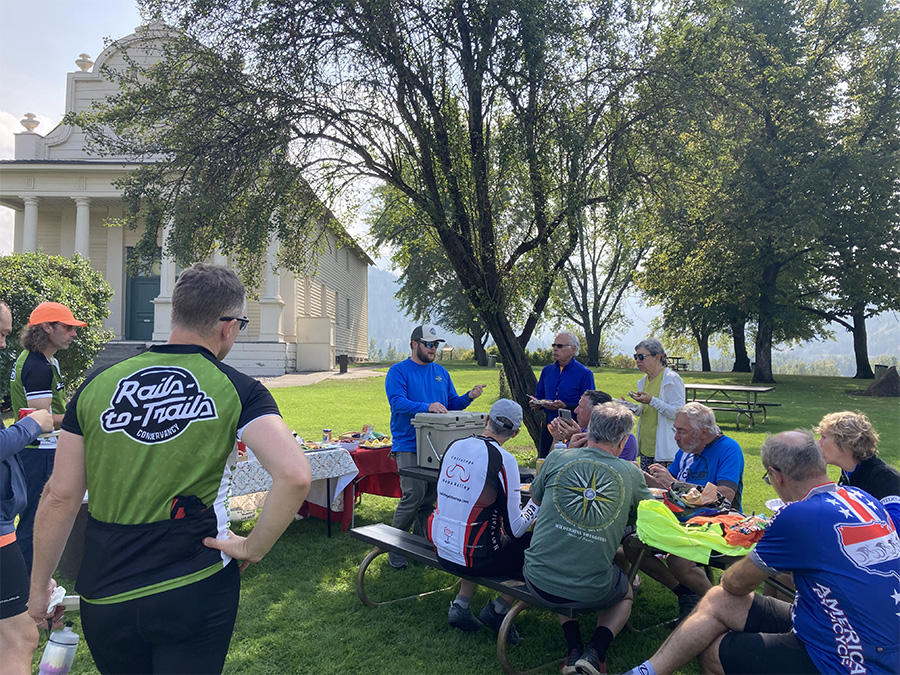
Our Trailblazer Society plays a critical role in supporting the growth of America’s trail networks. These RTC members provide donations of $1,000 or more annually, creating a crucial pool of funding for our mission-guided work. In 2022, Trailblazer Society members visited key sections of the Great American Rail Trail®—Idaho’s Route of the Hiawatha and Trail of the Coeur d’Alenes—to see firsthand the positive impact that these trails have on their local communities and nationally.
Throughout the year, RTC programs and events keep this community of critical supporters engaged and in the know about the most important issues facing the trails sector—from priority projects to deep dives on the funding strategy to connect the nation’s trails.
Protecting Trails in Our Courts
As the foremost defender of rail-trails, RTC continues to protect rail-trails in America’s courts and provide important technical assistance on legal issues, having been involved in more than 60 cases to date.
Our legal team participates in cases and legal proceedings that have implications for rail-trail conversions with a simple objective—protecting the legal and policy framework for railbanking, which has helped make an estimated 194 rail-trails possible since 1983.
IMPACT REPORT FY 2022 SECTIONS
President’s Message • Our Vision • TrailNation • TrailLink • Great American Rail-Trail • Trail Advocacy • Trail Building • Experiencing Trails • Finances • Team RTC

Trail use has reached record highs in the past few years, and in fiscal year (FY) 2022, we sought to connect more people with trails—and ensure everyone in America has safe, convenient access where they live so they can walk, bike and be active outside.
Throughout the year, we built support for America’s trail networks by highlighting the people and communities leading the charge to make these vital assets possible. We sought ways to harness the renewed energy and excitement of a nation around trails and trail networks—engaging more people than ever before, with a goal to continue to build public demand and support for this essential infrastructure.
Expanding Audiences and Support
Our reach—to readers, supporters, influencers and the wider public—achieved new heights through authentic storytelling, media engagement, and building strong and sustained relationships with our national and grassroots supporter bases.
We aimed to capture and elevate inspirational stories from the rail-trail community through our website, which had over 1.4 million visitors in FY 2022, as well as our TrailBlog, which saw nearly 483,000 individual readers, and our vast social media community of more than 220,000.
Through our monthly eNews, which reaches 428,000 people, and our flagship publication, Rails to Trails magazine, with a print circulation of about 130,000, we highlighted America’s remarkable trails and champions, past, present and future, and the impact they have regionally and nationally.
In the media, rail-trails and multiuse trails received nearly 34,000 mentions in FY 2022, and RTC was mentioned 2,400 times—including in major outlets such as The New York Times and The Boston Globe.
Trail Moments
Via our Trail Moments initiative, we showcase the stories and personal experiences of America’s diverse trail users across the country that illustrate just how vital trails are to our health and well-being.
In the summer of 2022, we provided weekly challenges and incentives to encourage people to find new ways to be active on trails, including swapping a car trip for a walk or bike ride, discovering nature with kids and other activities. The campaign was featured nationally through a partnership with iHeartRadio on “Elvis Duran and the Morning Show” and “The Breakfast Club.” The campaign received more than 82,000 page views in FY 2022.
#TrailMoments With Chelsea Murphy
She Colors Nature blogger Chelsea Murphy is a self-proclaimed “adventure mom” who loves getting outside. After moving to her husband’s hometown, she started hiking to connect to the community and noticed a lack of diversity in the outdoors. Now, she is committed to building a more inclusive and equitable outdoor experience. Learn more about her efforts and what’s driving her vision.
#TrailMoments With Victoria Yuen
In 2020, Victoria Yuen was looking for a safe way to be active outdoors, so she swapped her car for a bike. After conquering her fears of city biking, Yuen now takes her bike all over Washington, D.C.—and shared her tips for bike commuting with RTC. Read more about Victoria’s bike-commuter transformation.
Celebrate Trails Day
Celebrate Trails Day is the nation’s spring kickoff to the trail season, designed to highligh the impact of trails and trail networks on communities across the country. On Celebrate Trails Day, April 23, 2022, we engaged thousands of people in all 50 states and Washington, D.C., who got outside on trails individually or via more than 150 official events to celebrate these vital assets. Nearly 200 organizations helped expand opportunities for an incredible trail experience on Celebrate Trails Day.
A post-event survey showed that, on average, participants spent more than 65 minutes being physically active outside on the trail on April 23 for a combined 812,000 minutes of physical activity. The findings underscore the importance of programming and events in promoting and supporting trail use, and the role of trails in encouraging physical activity.
On Celebrate Trails Day, 24% of participants also reported swapping a short car trip for a walk or a bike ride to their destination!
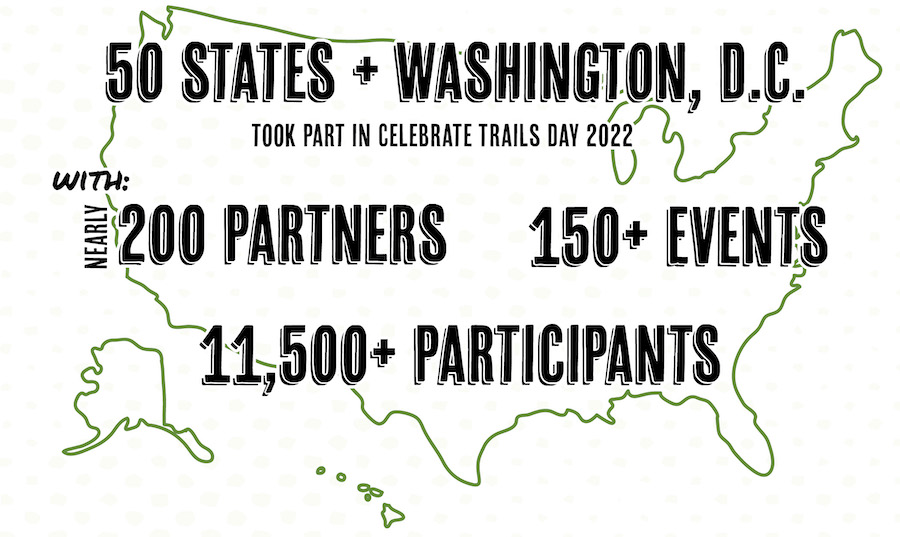

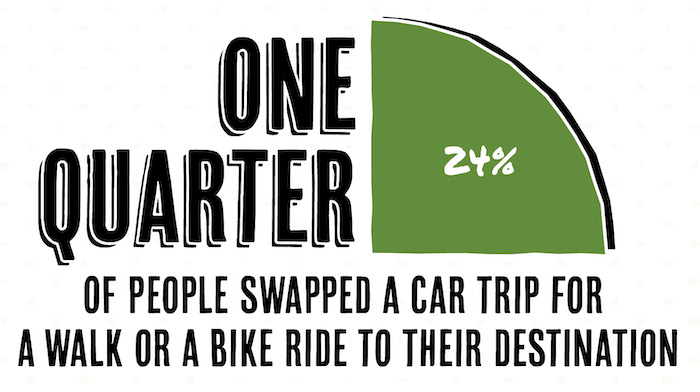
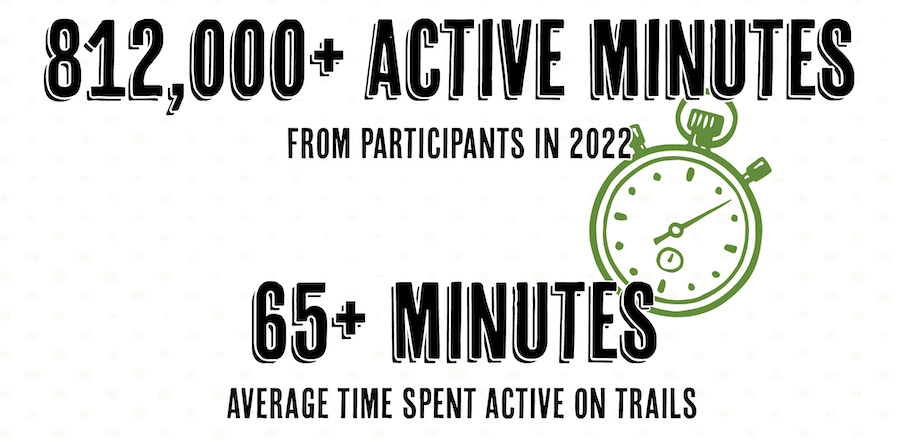
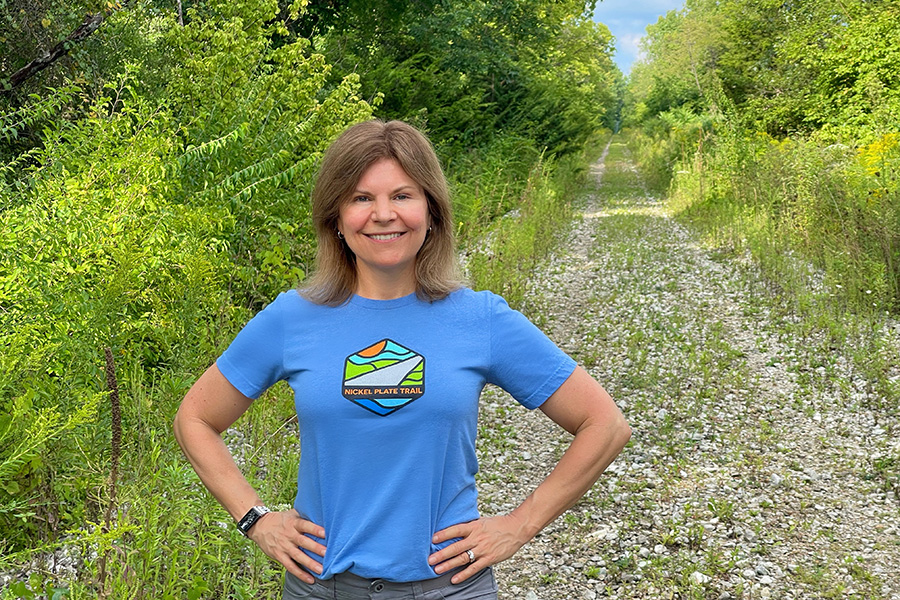
Rail-Trail Champion
“Over the past several years, we’ve all experienced how important it is to have safe spaces to walk, bike and be active outside, right where we live. There is more clarity now for everyone about why it matters to invest in outdoor infrastructure, like trails, that make our communities great places to live.”
—Indiana State Rep. Carey Hamilton (D-87)
The Doppelt Family Rail-Trail Champions Award honors exceptional individuals who have made significant contributions to the rail-trail movement through their work, volunteerism or support.
In FY 2022, RTC named Indiana State Rep. Carey Hamilton (D-87) as the 2022 Doppelt Family Rail-Trail Champion. Rep. Hamilton was celebrated for her leadership in founding the bipartisan Indiana Legislative Trails Caucus, which is accelerating investment in the state’s trail system as a strategy to spur local economic development and strengthen neighborhoods. To date, the caucus has secured more than $60 million for Indiana trails. The award was presented at the tail end of Indiana’s Year of the Trails (2021–2022), which was adopted by the state legislature to galvanize support for trails across the Hoosier State.
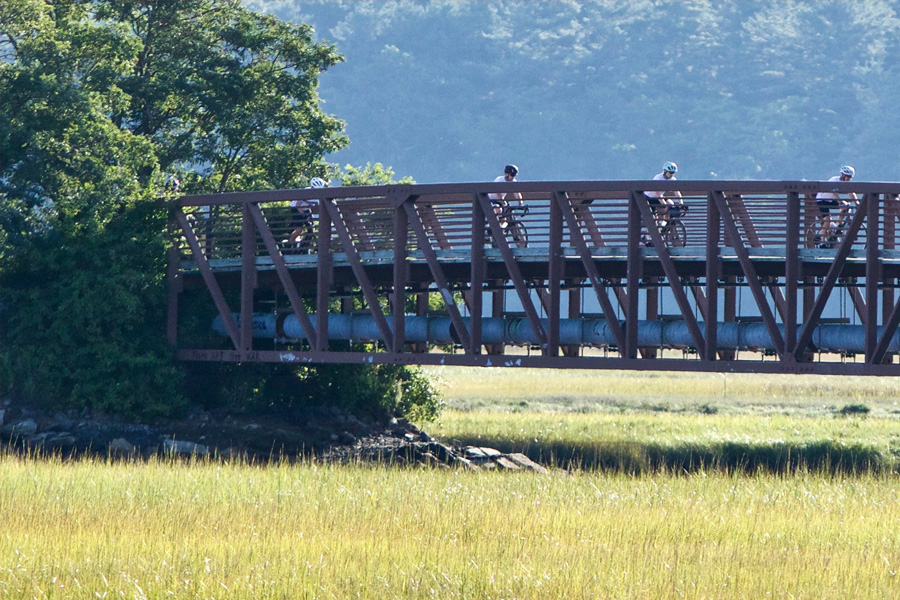
Rail-Trail Hall of Fame
“The Eastern Trail is the epitome of what an outstanding trail should look like—something that links communities together, and is accessible for riders of all abilities, suitable for various types of bikes, and packed with picture-perfect scenery that highlights some of the best parts of our beautiful state.”
—Jean Sideris, Executive Director, Bicycle Coalition of Maine
Since 2007, the Rail-Trail Hall of Fame has been recognizing exemplary rail-trails around the country. Nominees are selected through a range of criteria, and winners are chosen by national public vote.
Congratulations to Maine’s Eastern Trail, our 2022 Hall of Fame inductee, which welcomes 250,000 people each year along a route featuring stunning coastline and dense forests. The developing 65-mile trail is critical to two developing interstate trail networks: the 3,000-mile East Coast Greenway that will connect trails from Maine to Florida and the New England Rail-Trail Network, which aims to unite the region’s six states by multiuse trail.
IMPACT REPORT FY 2022 SECTIONS
President’s Message • Our Vision • TrailNation • TrailLink • Great American Rail-Trail • Trail Advocacy • Trail Building • Experiencing Trails • Finances • Team RTC
Summary of Activities and Changes in Net Assets for the Fiscal Year Ending Sept. 30, 2022
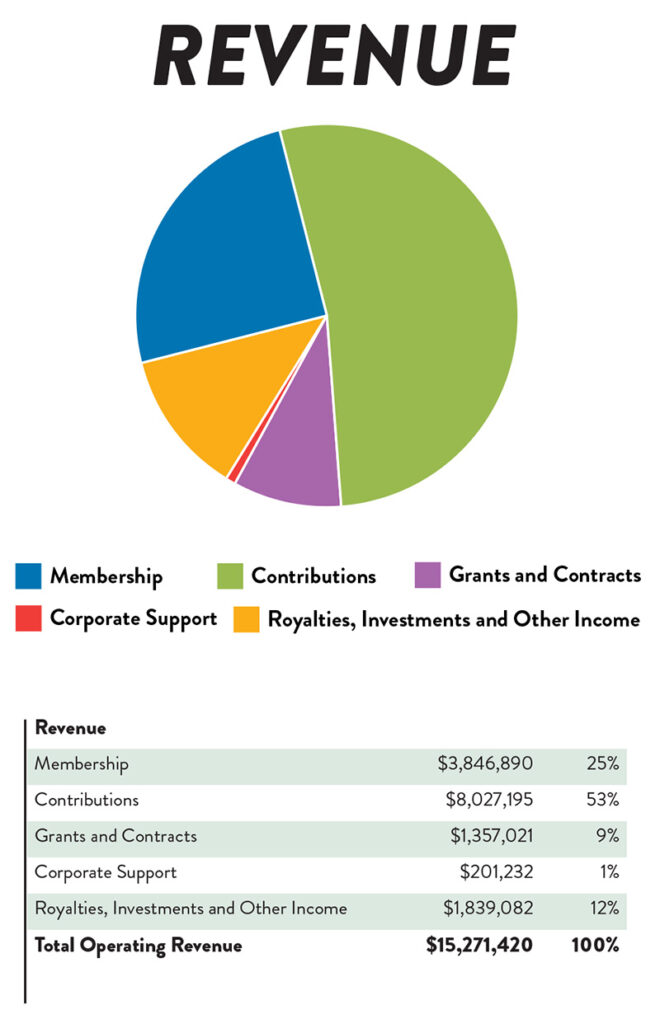
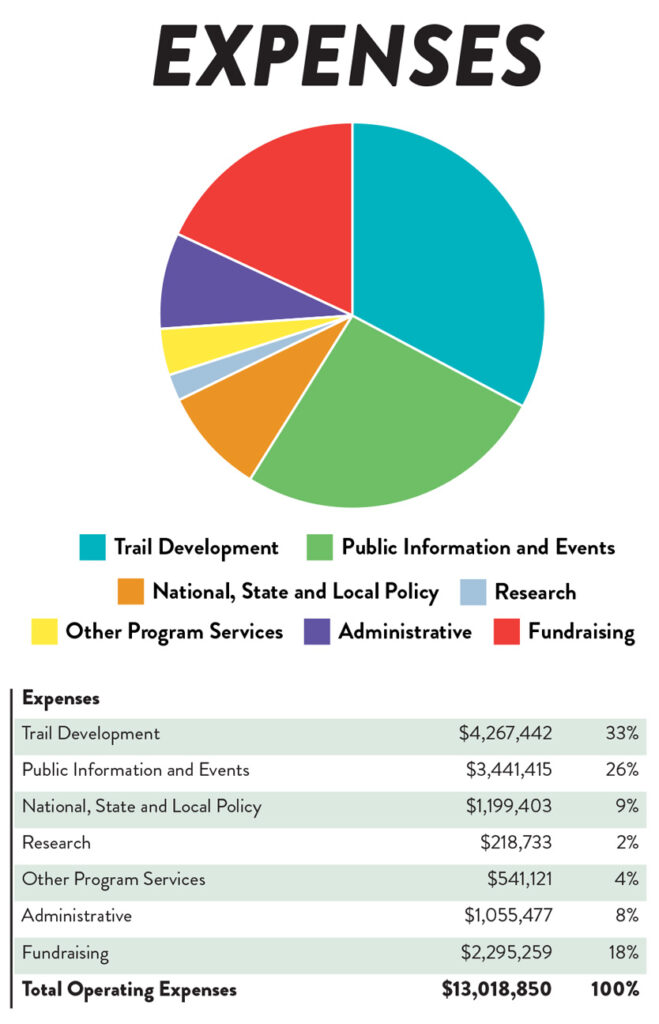
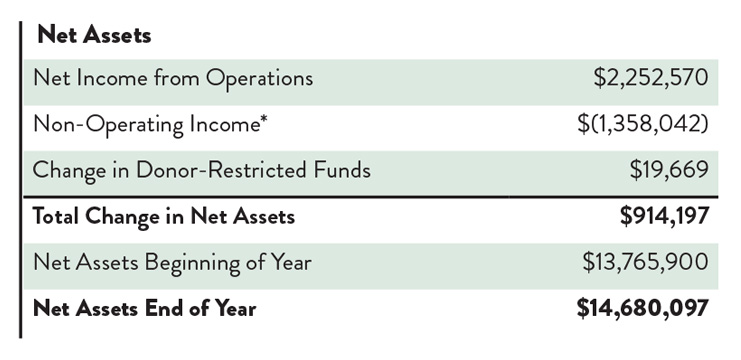
*Non-operating income represents realized and unrealized gains and losses on investment of restricted assets. Rails-to-Trails Conservancy is a nonprofit organization as qualified under Section 501(c)(3) of the IRS Codes.
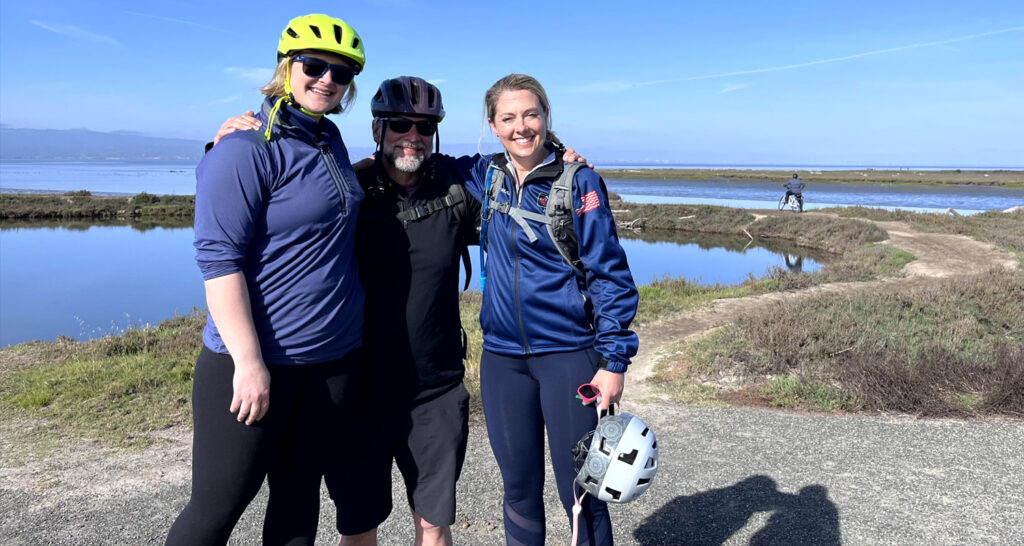
At RTC, we believe that everyone has the right to safely walk, bike and be active outside. Our work is guided by our shared values—centered on respect, equity, integrity and the opportunity to unite people around a common appreciation for trails and their impact.
Since 1986, RTC has worked to bring the power of trails and trail networks to more communities across the country, serving as the national voice for the rail-trail movement. Learn more about the team that makes this work possible and brings the impact of trails to life.
Contact
Get in touch with us and engage with our national community.
